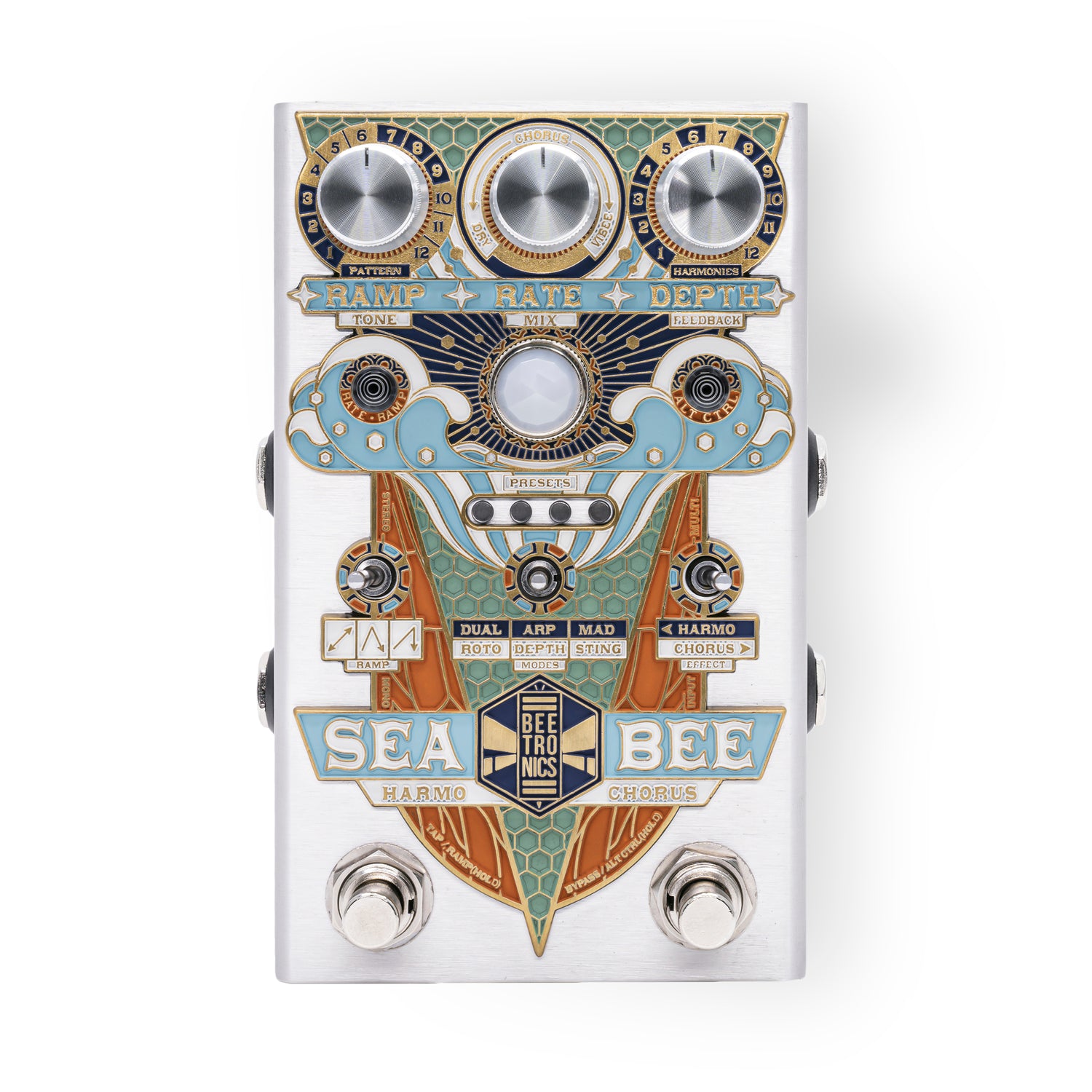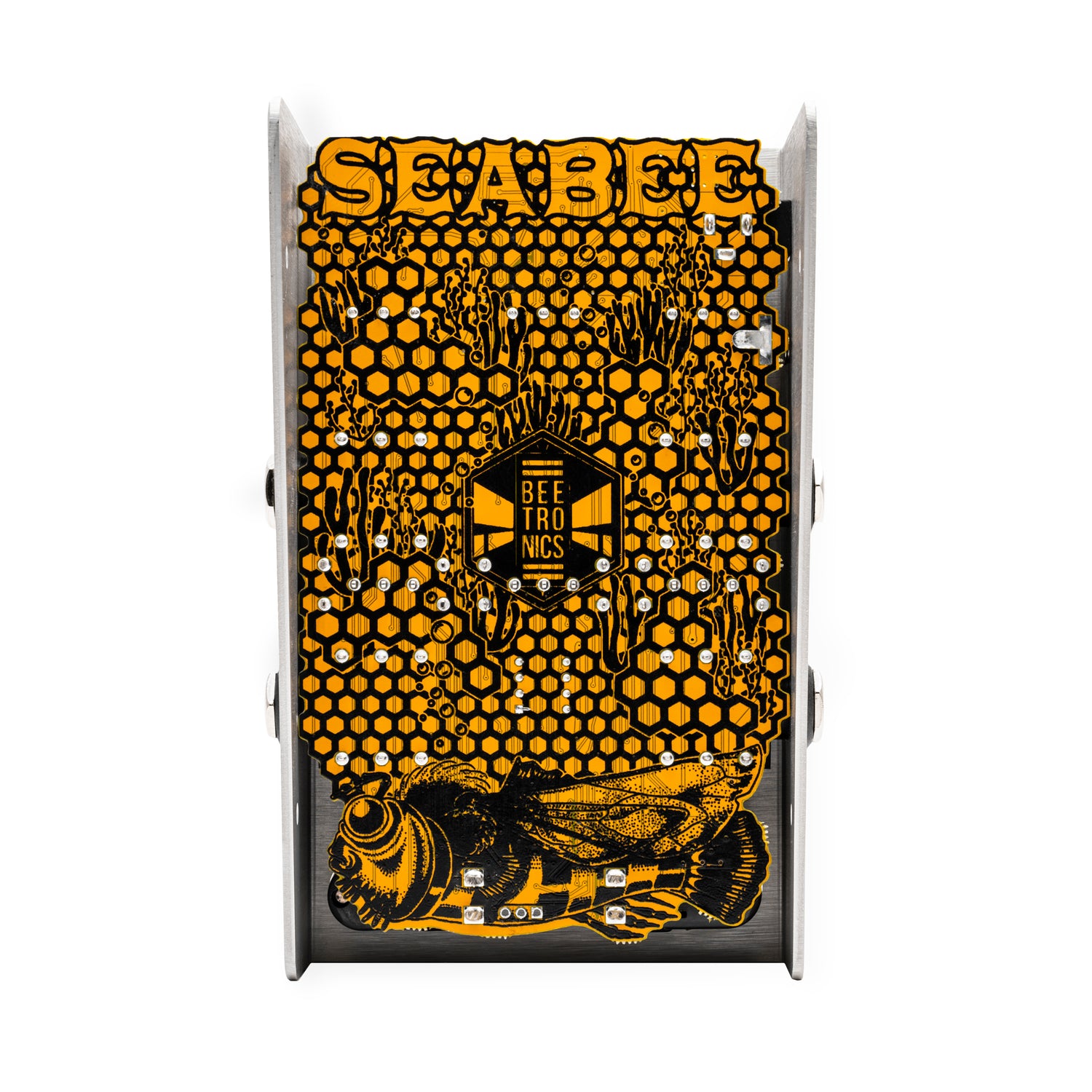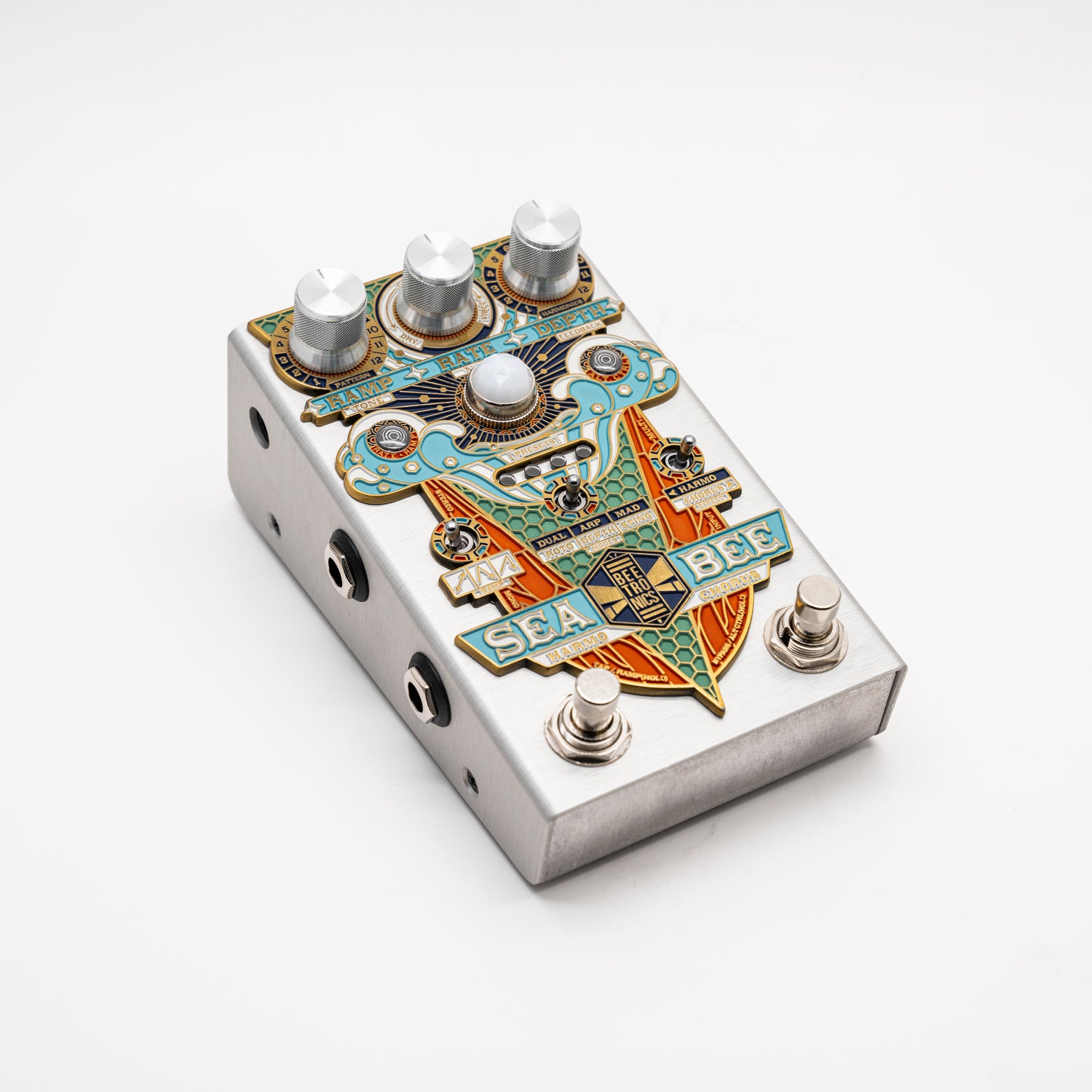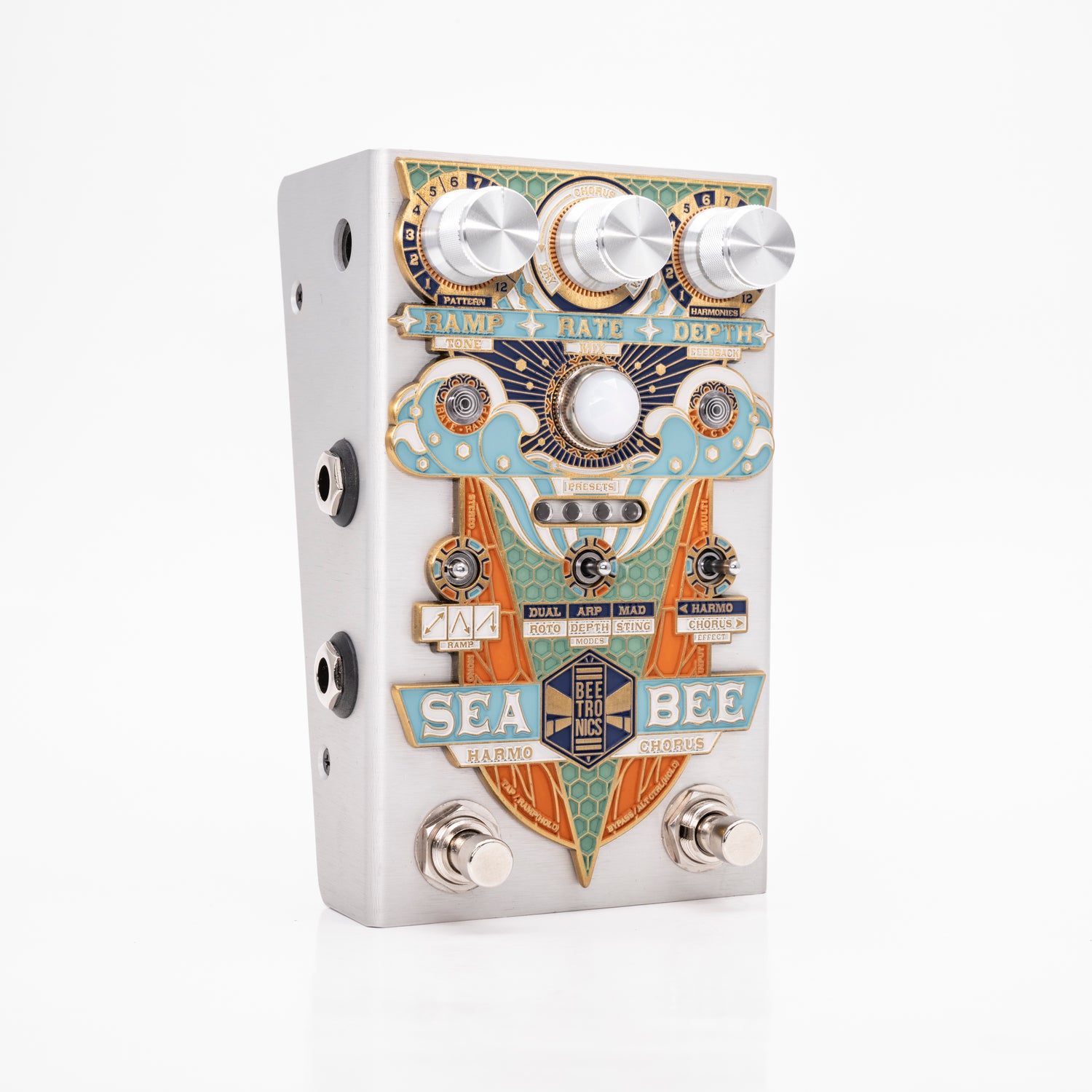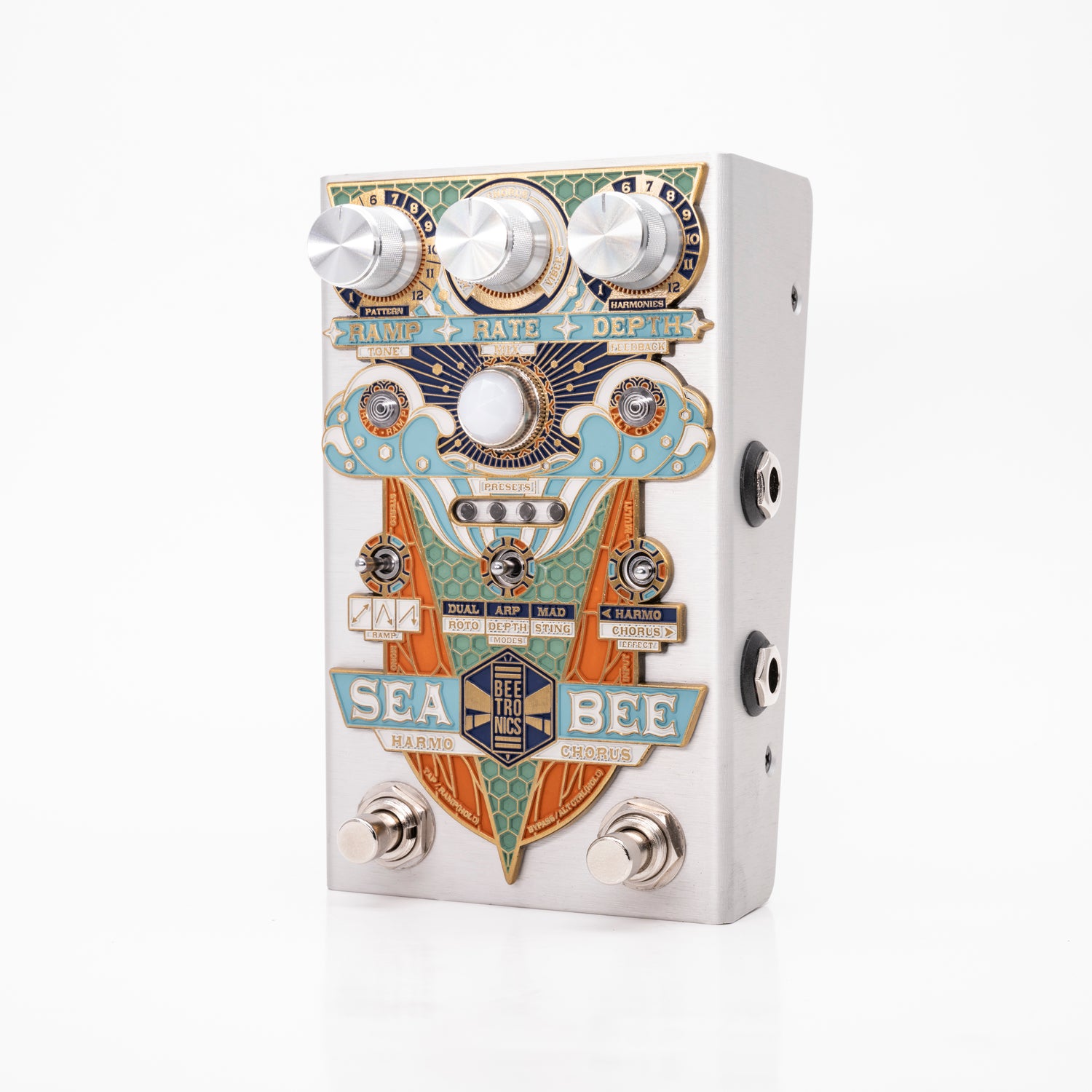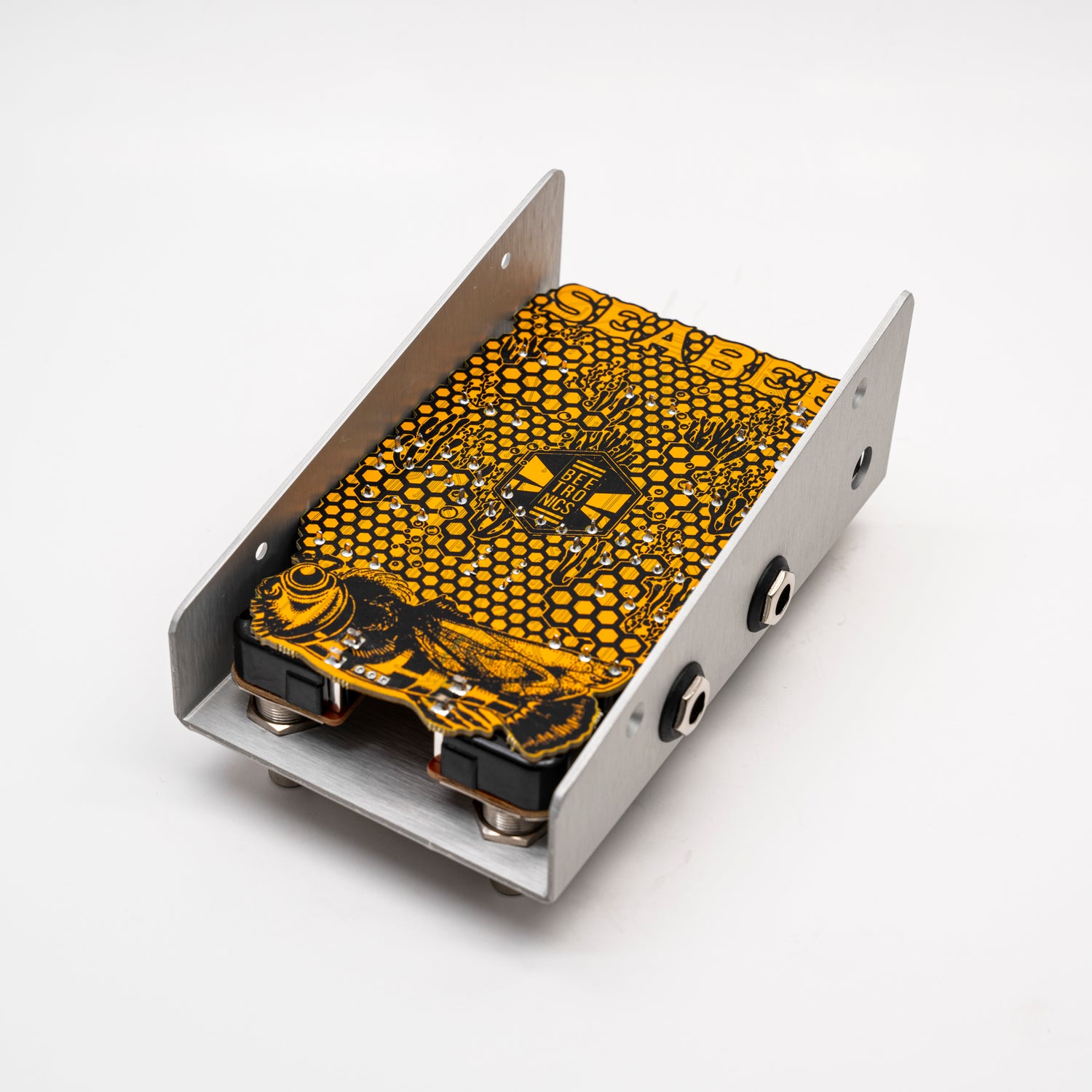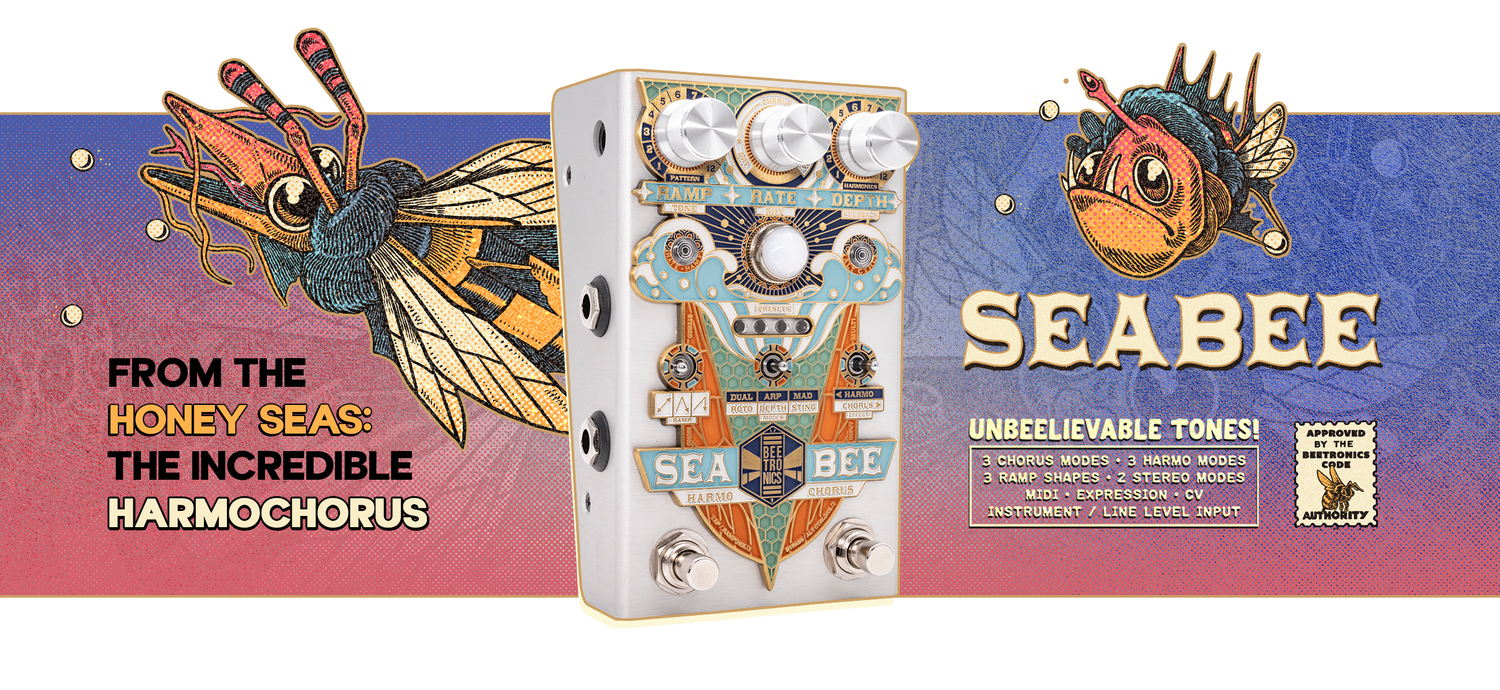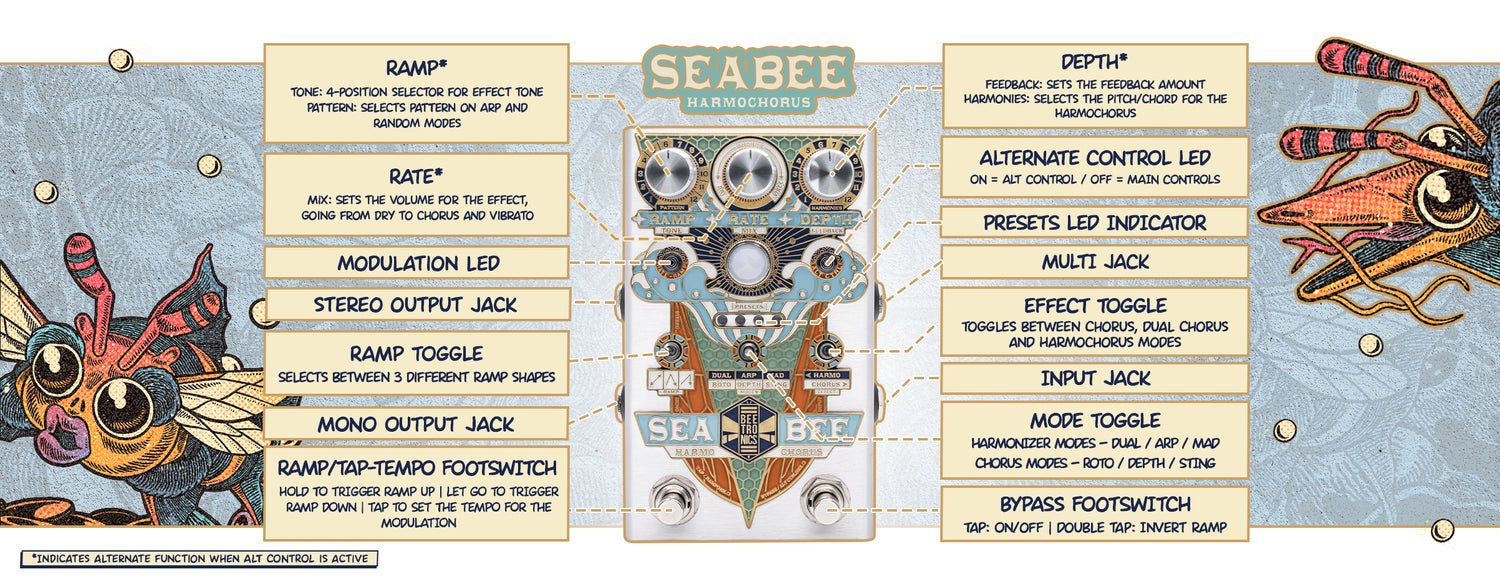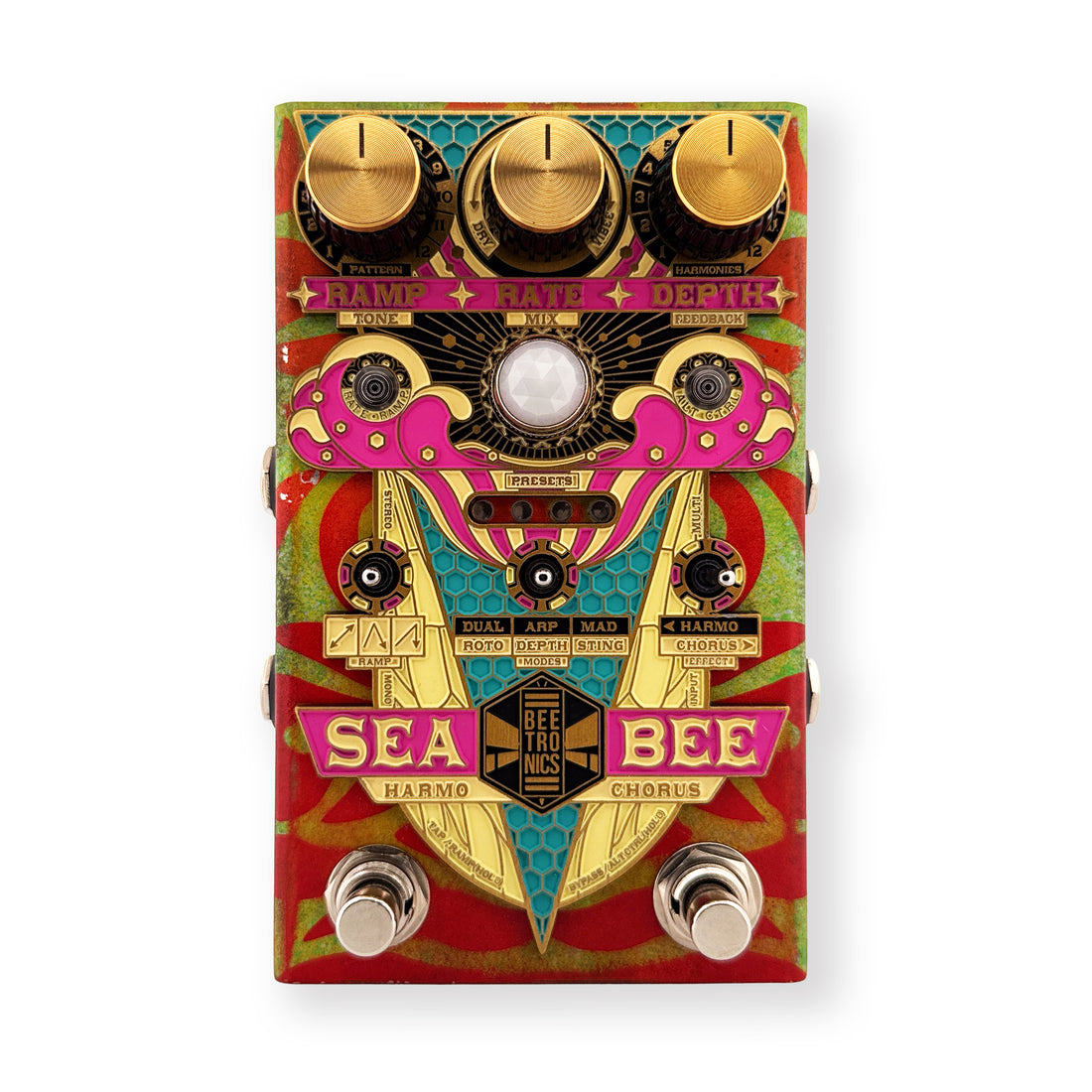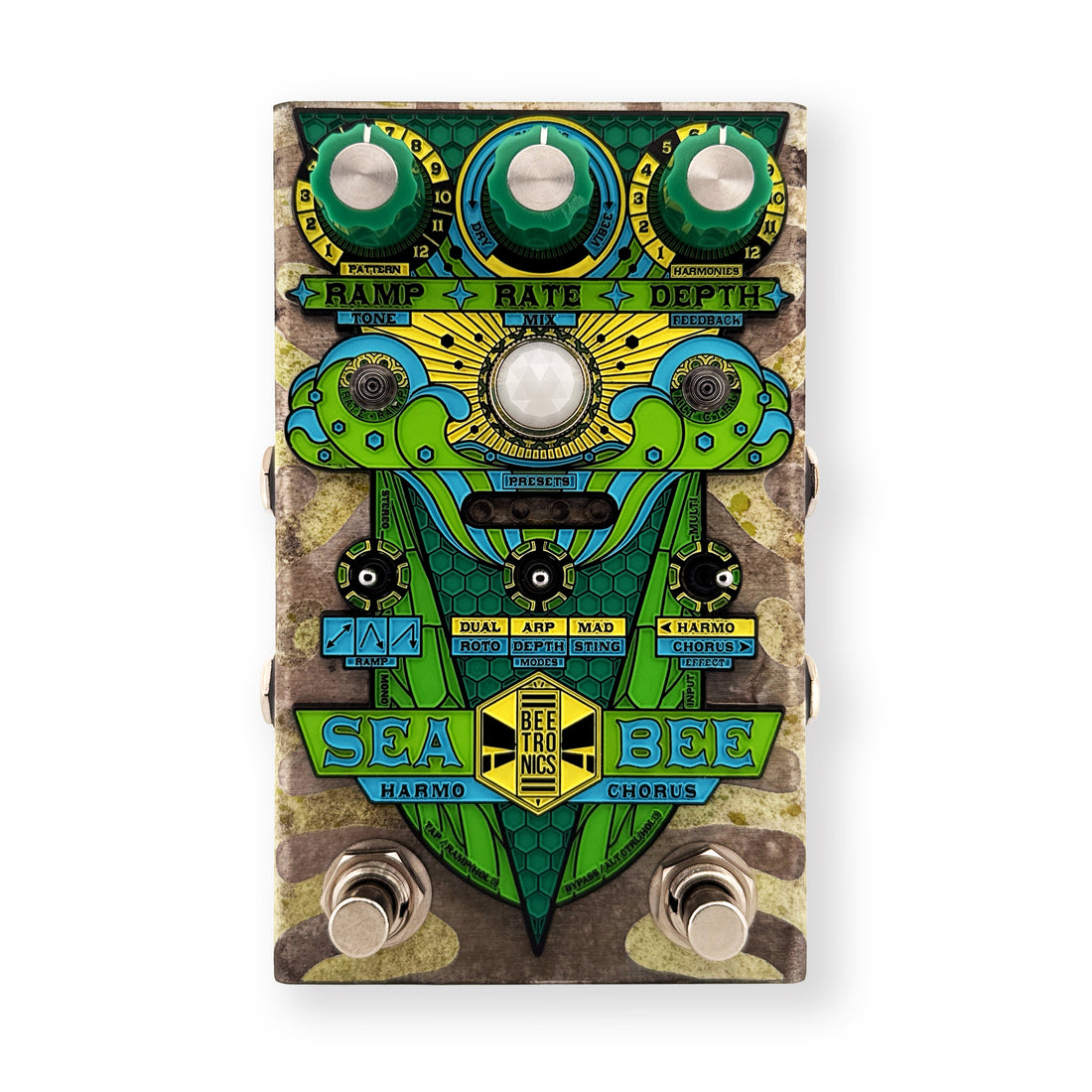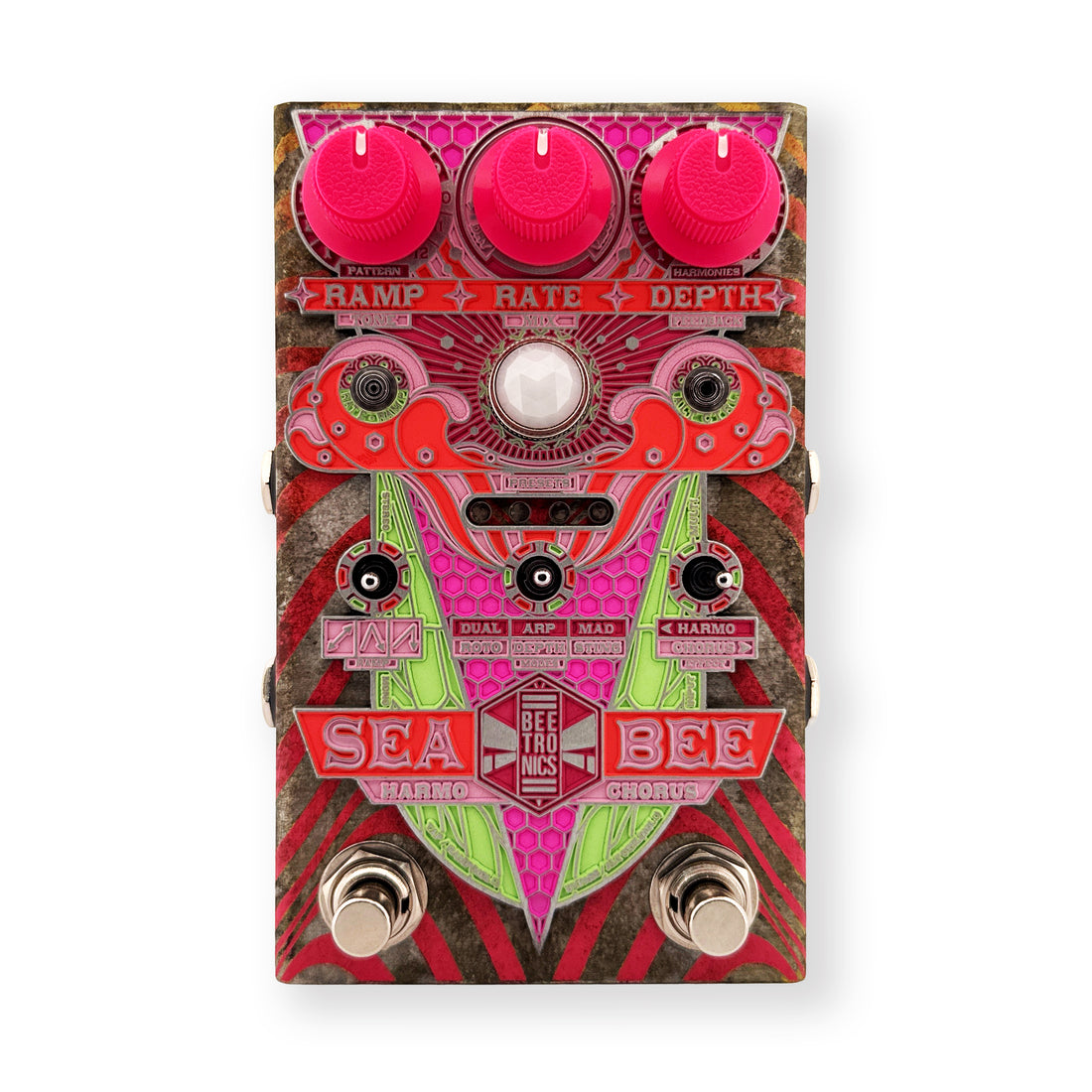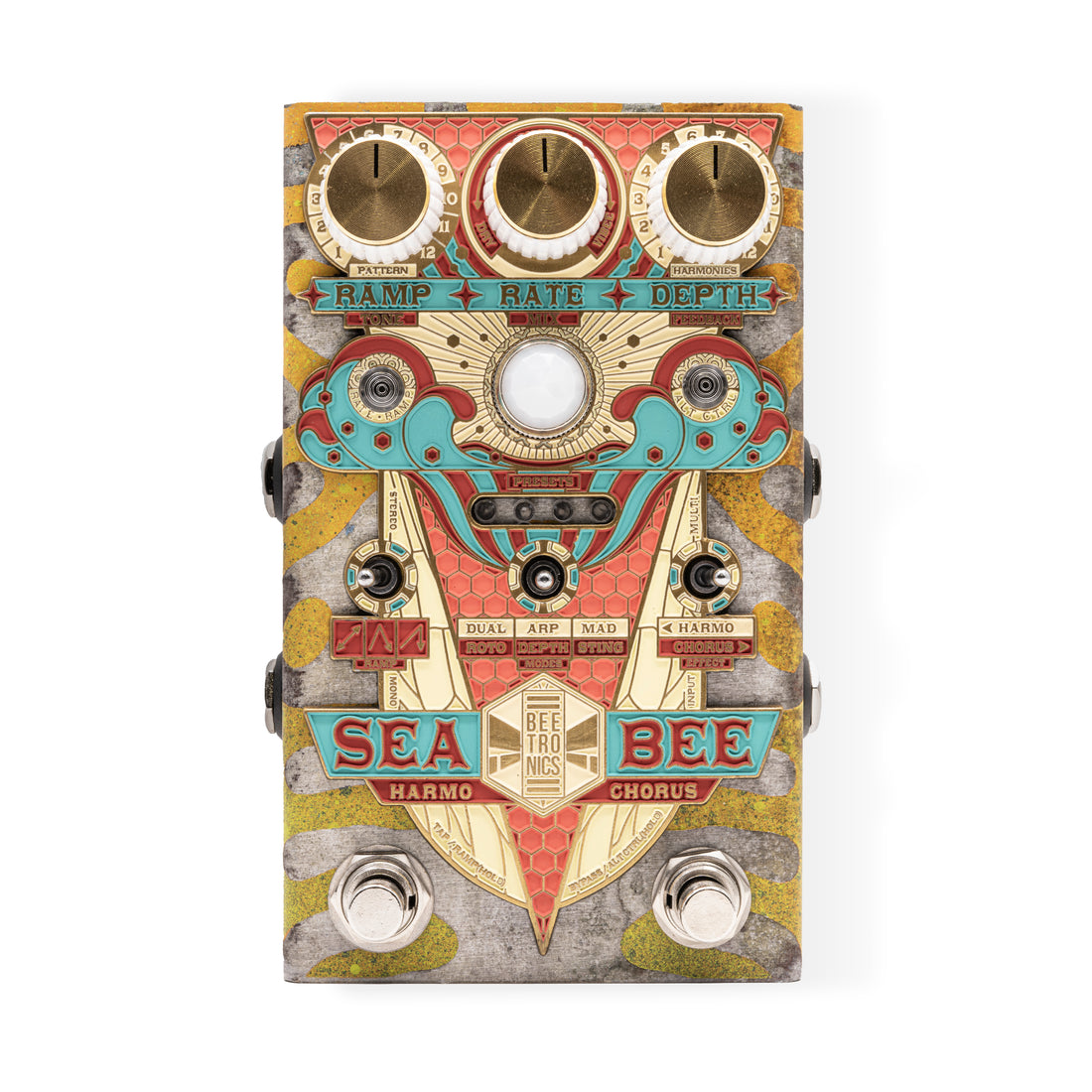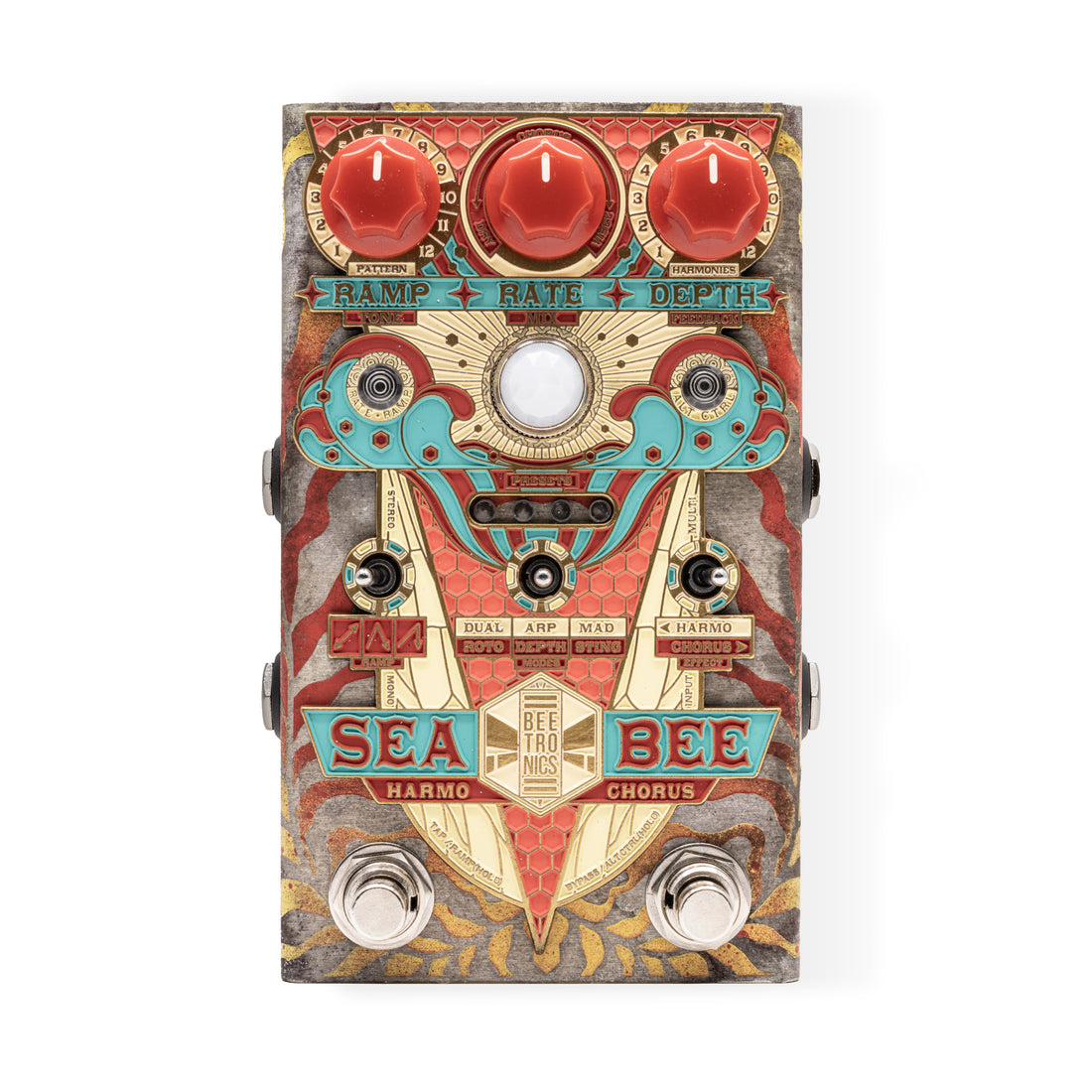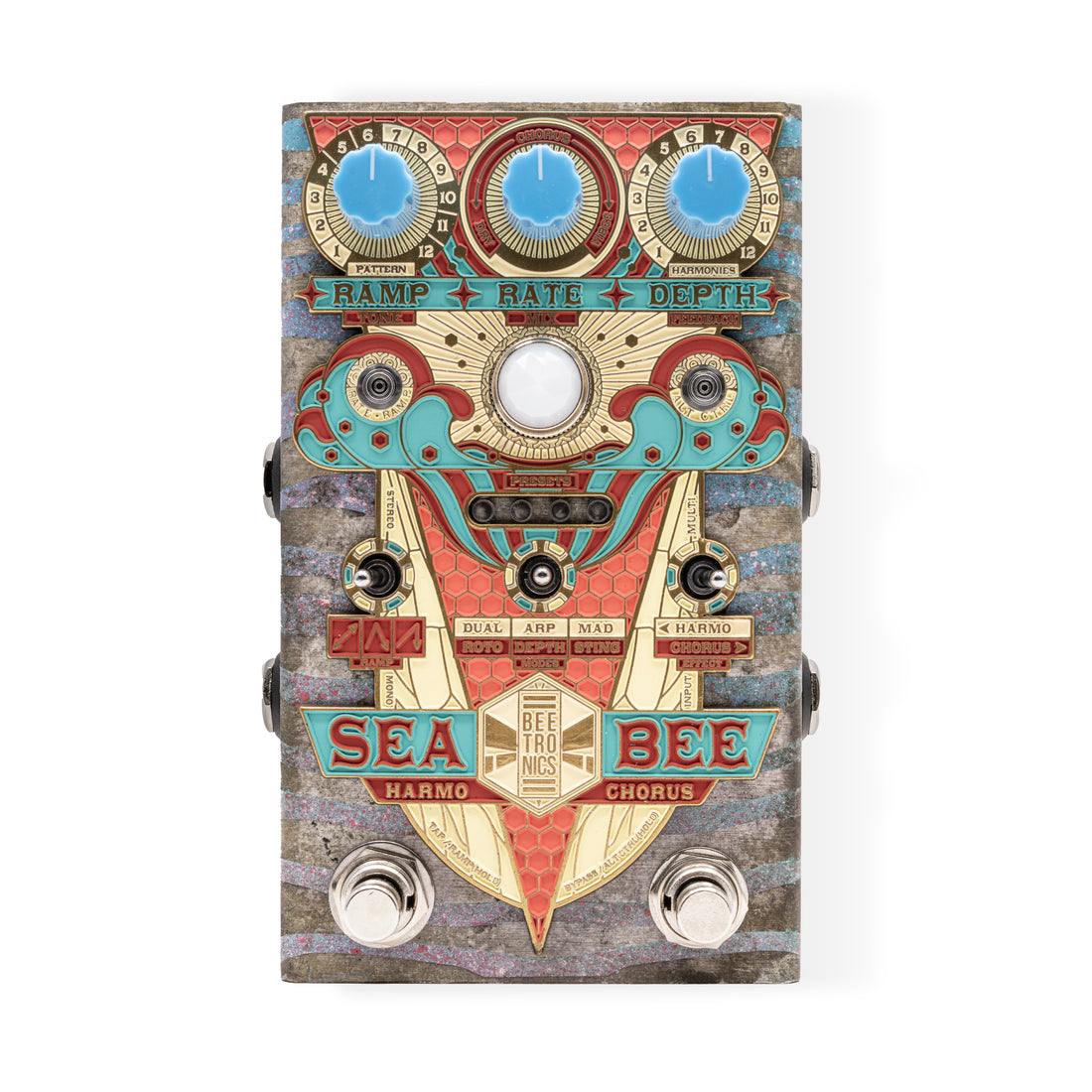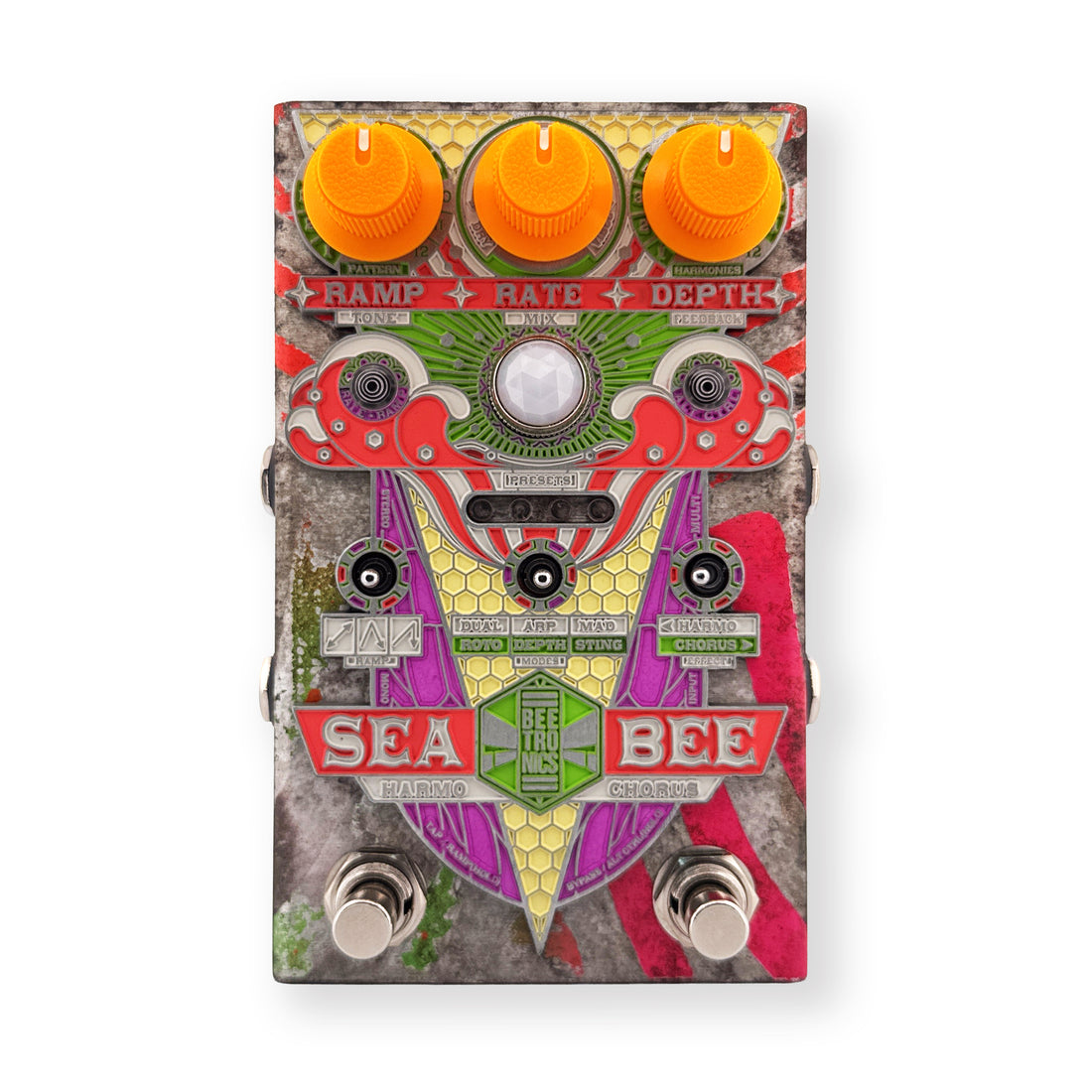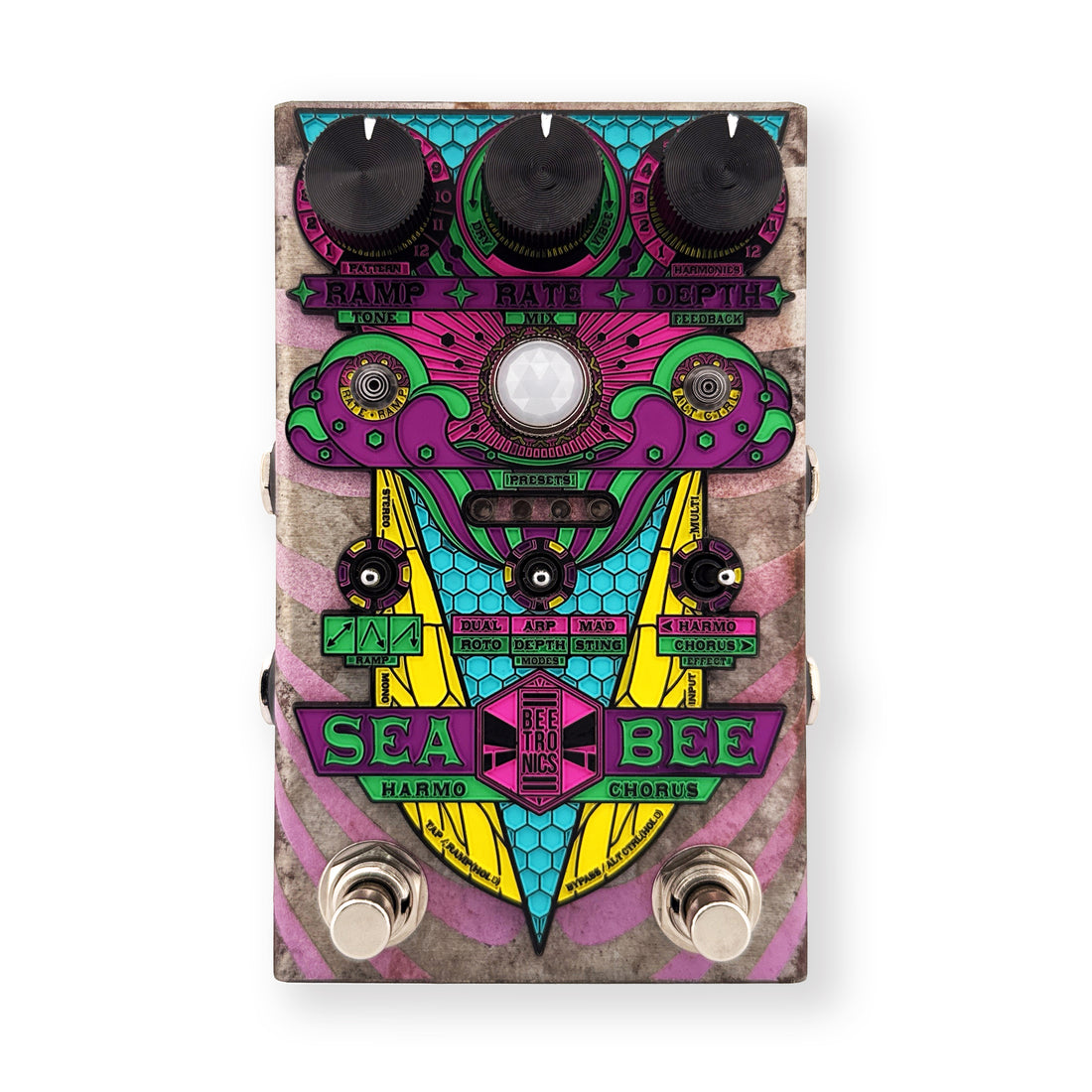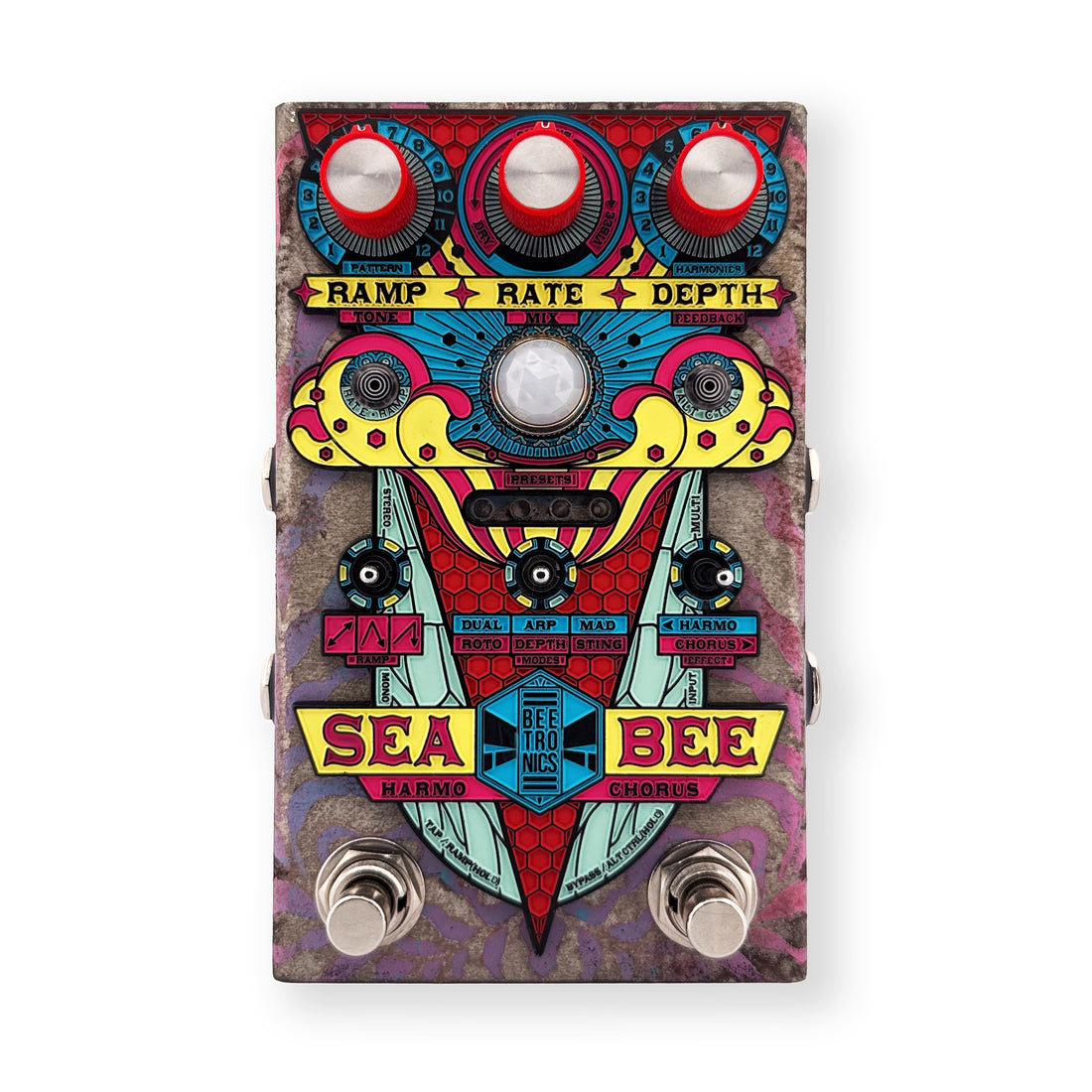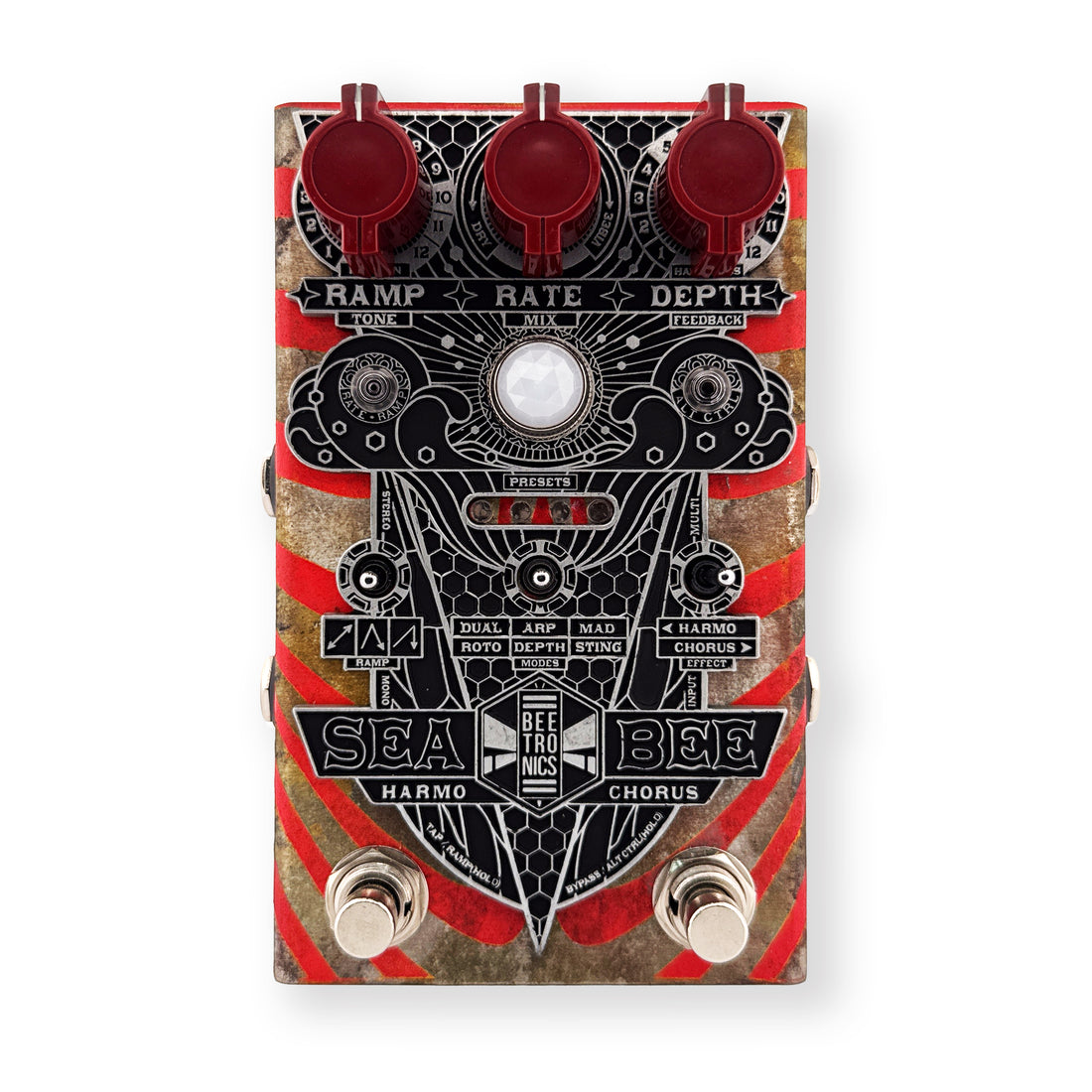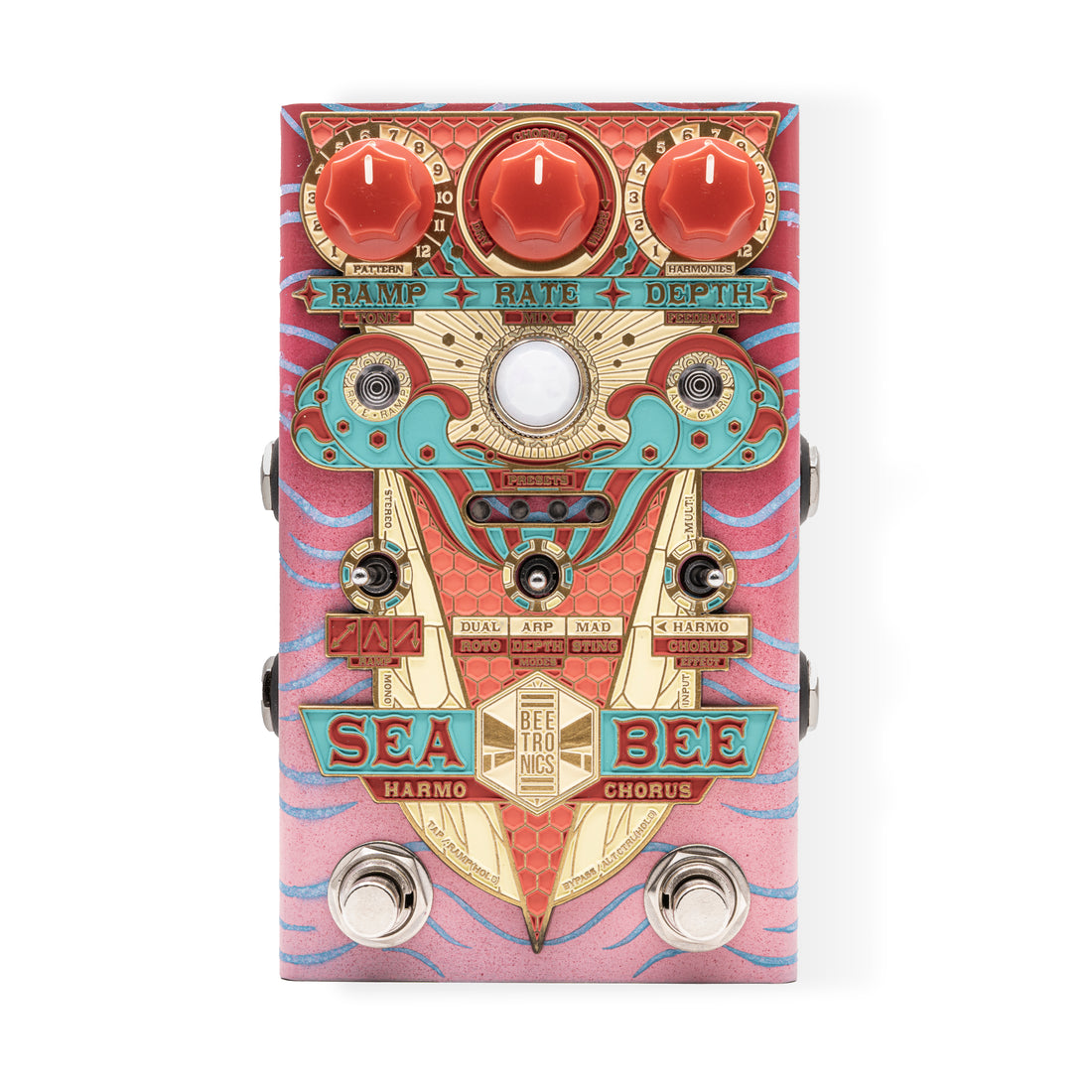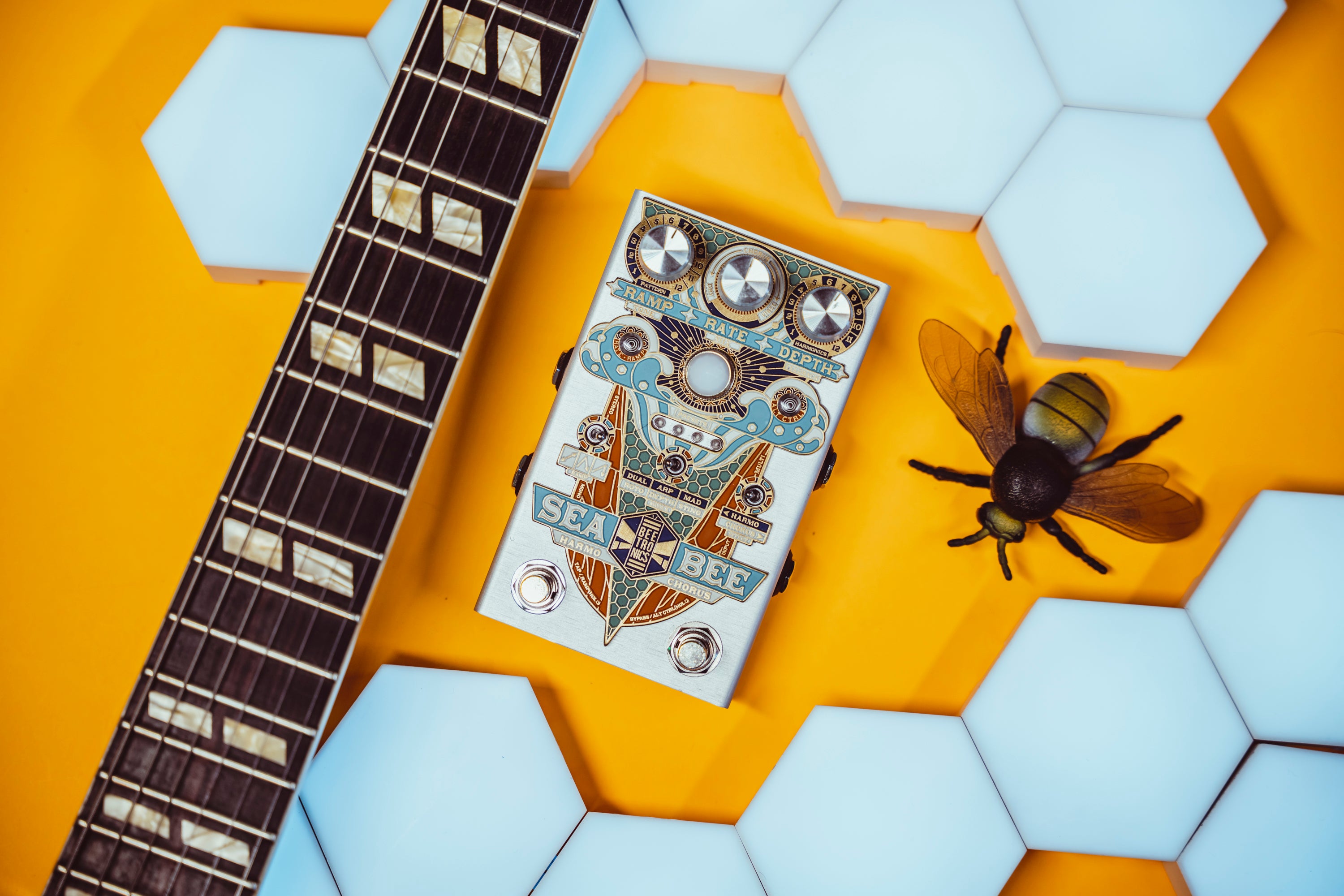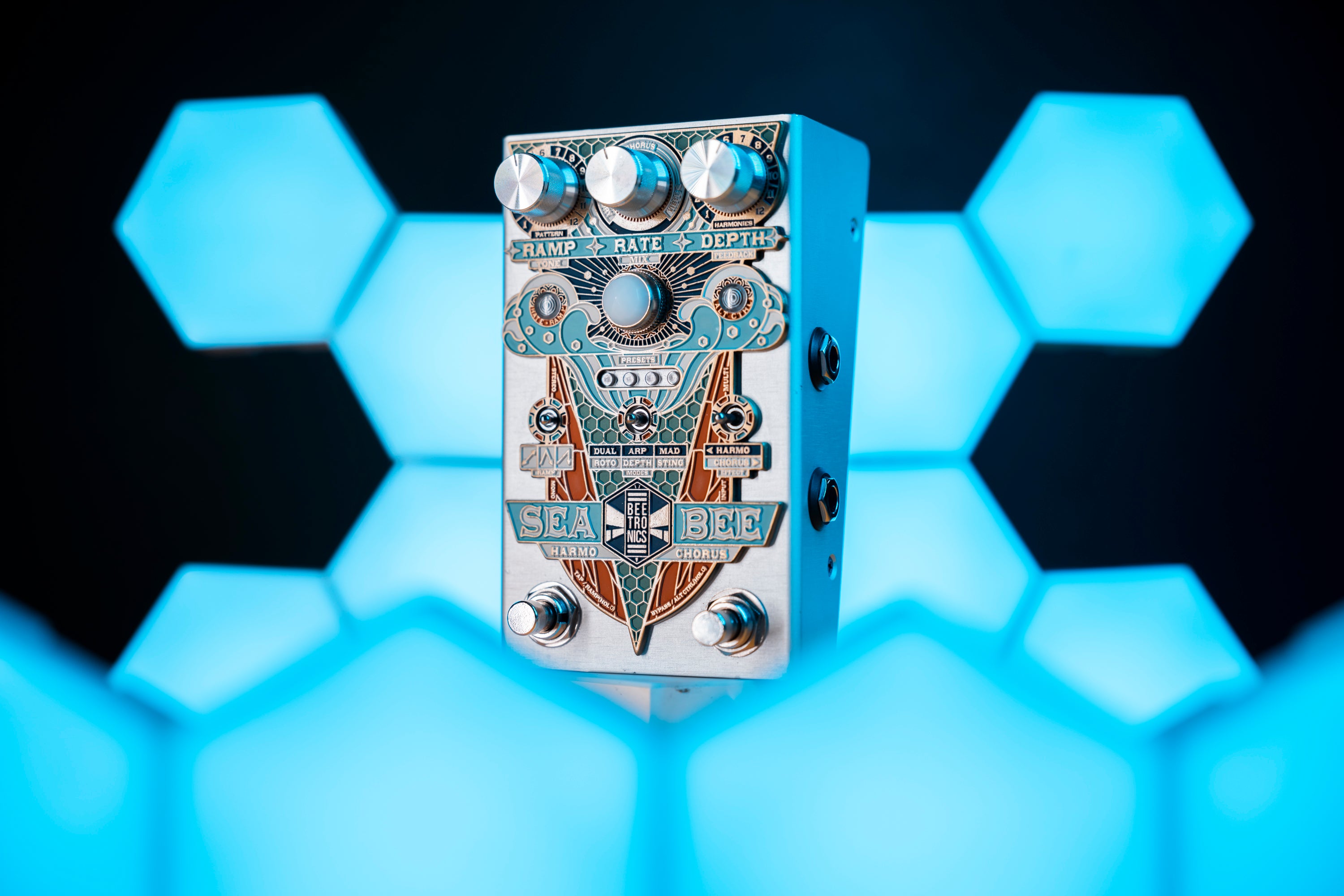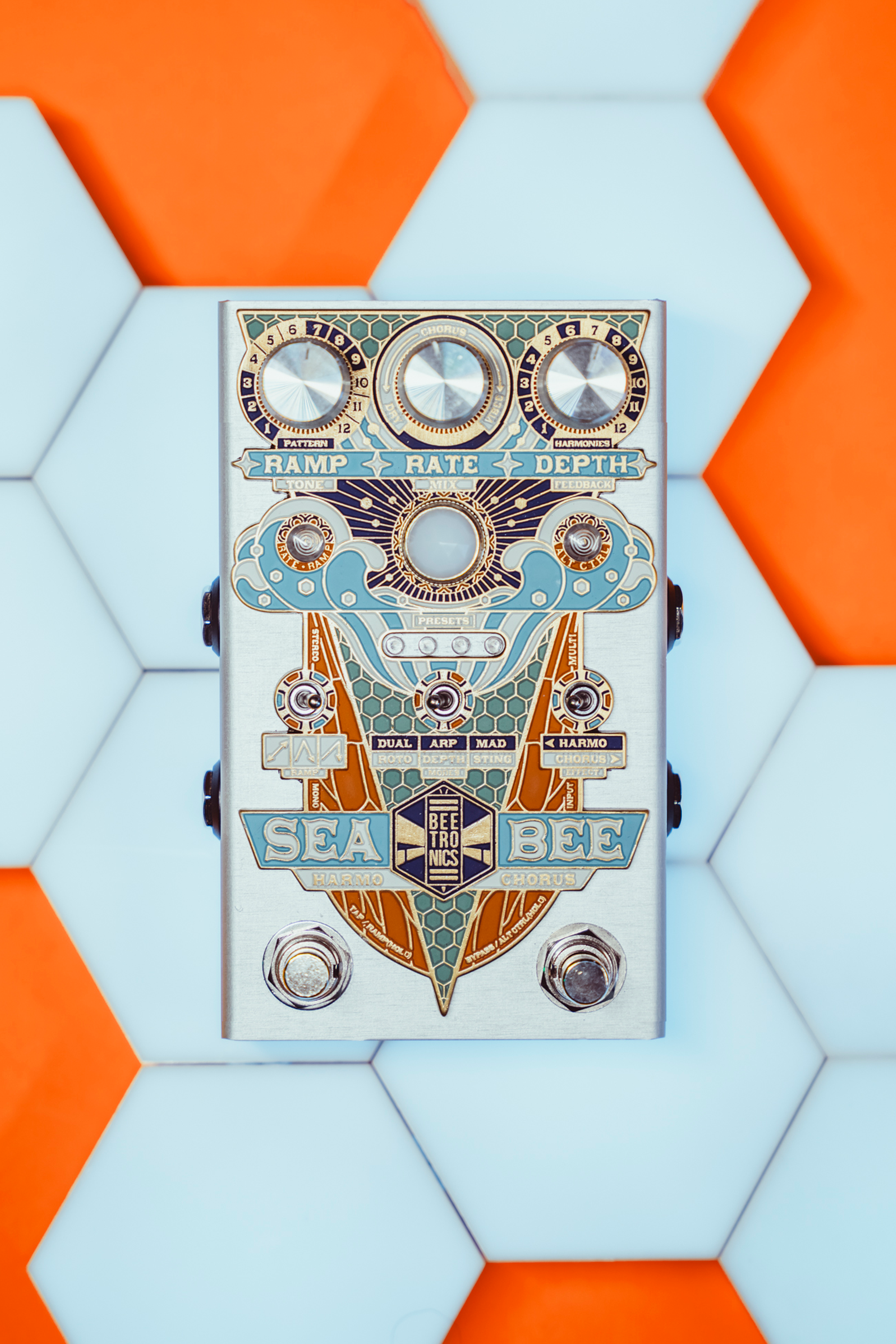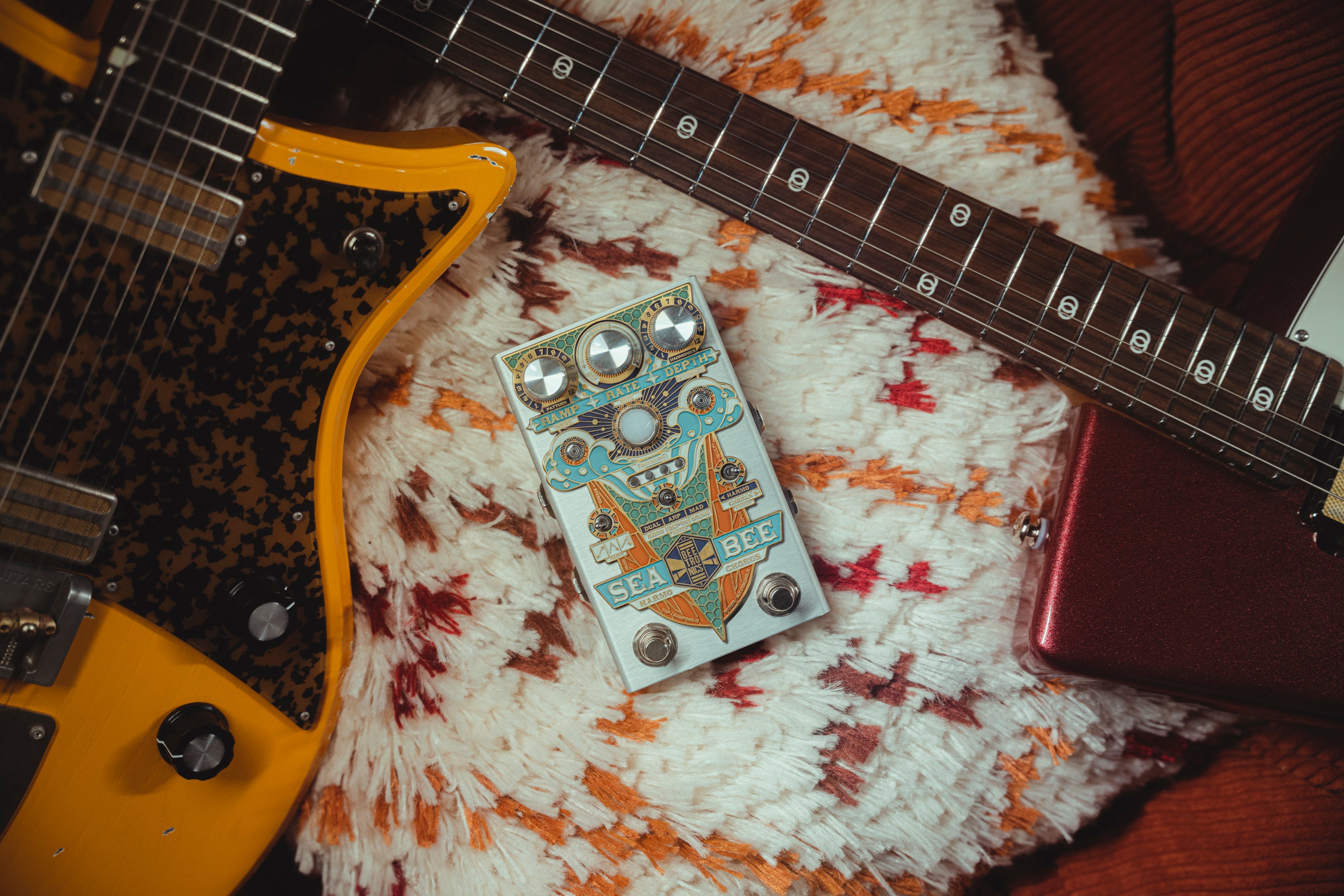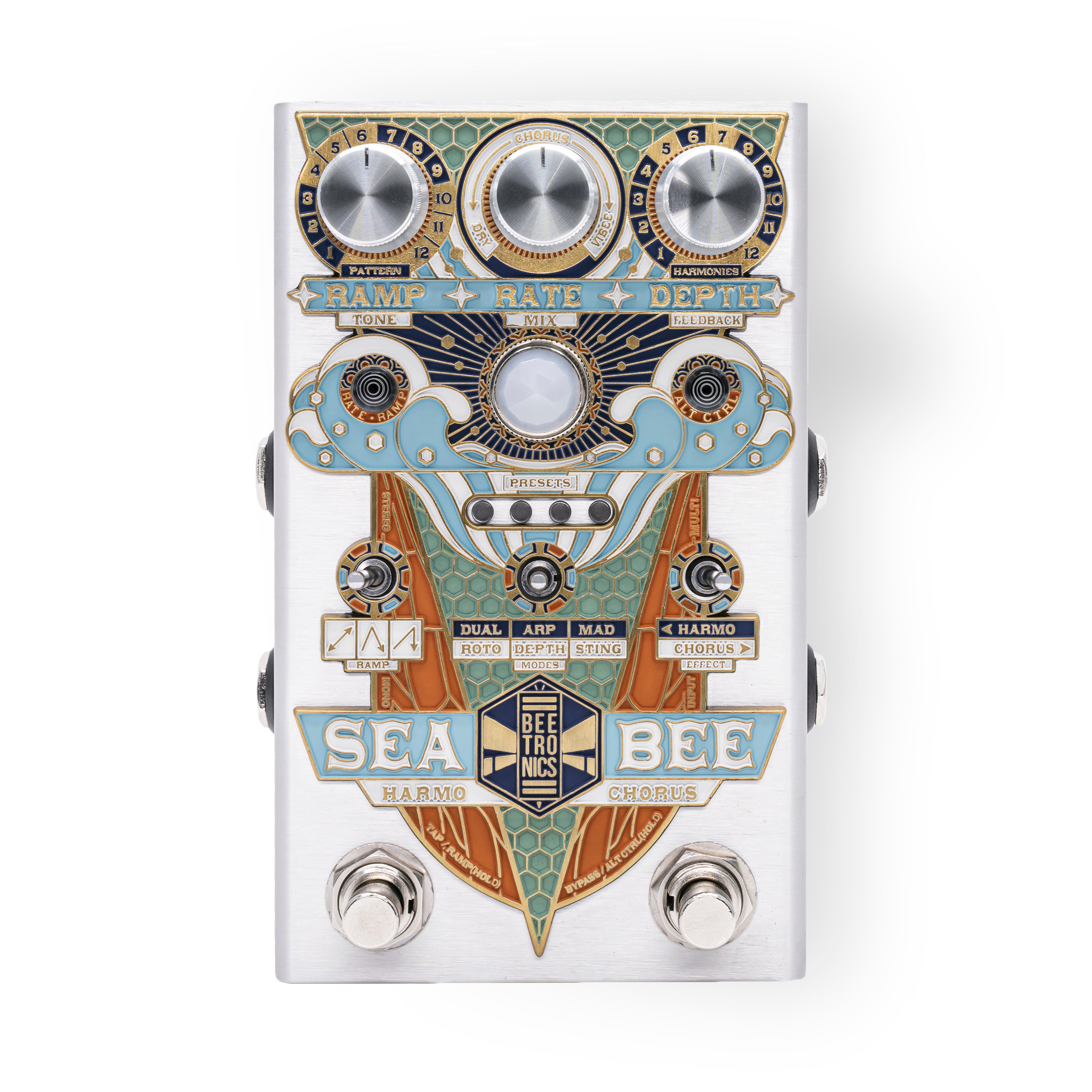

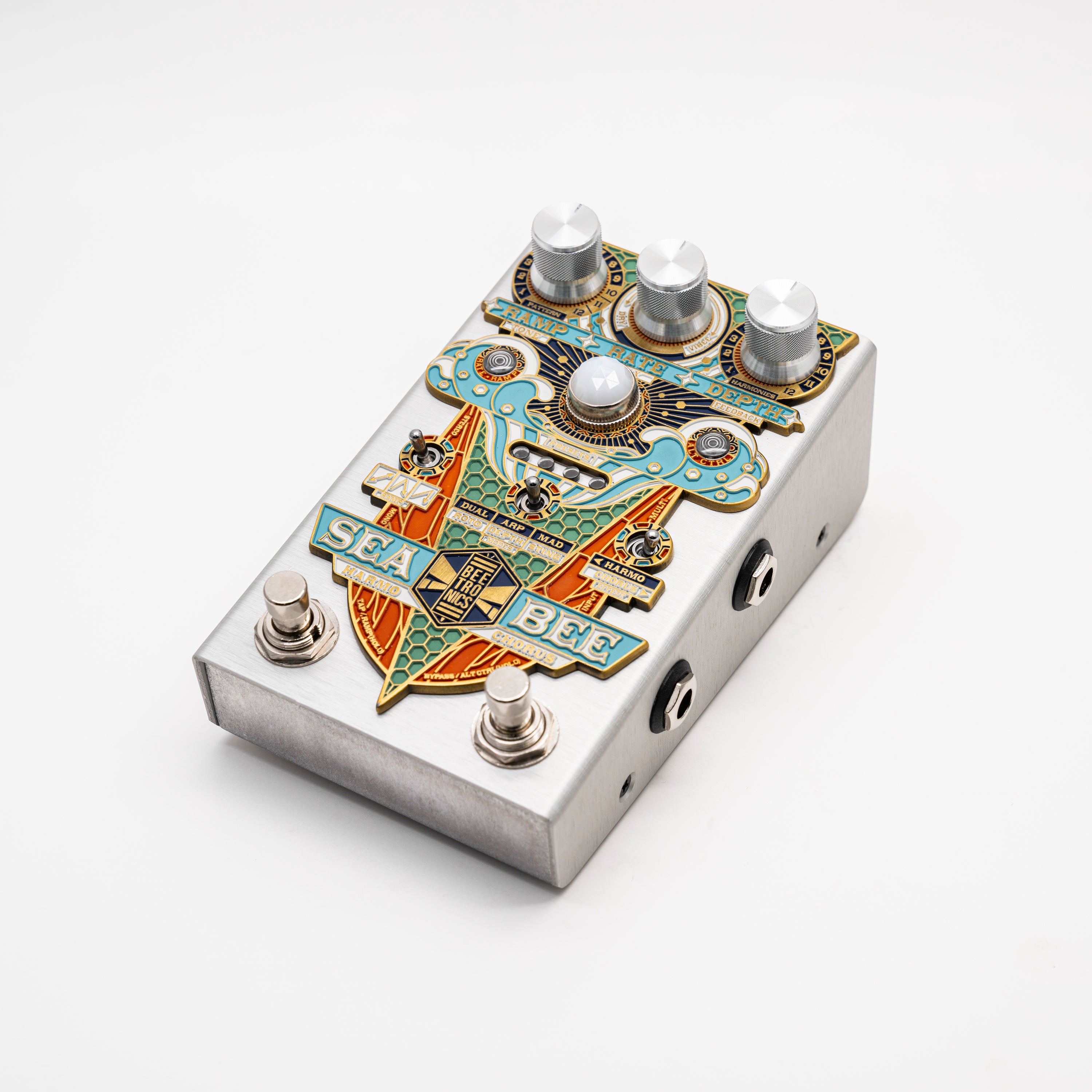
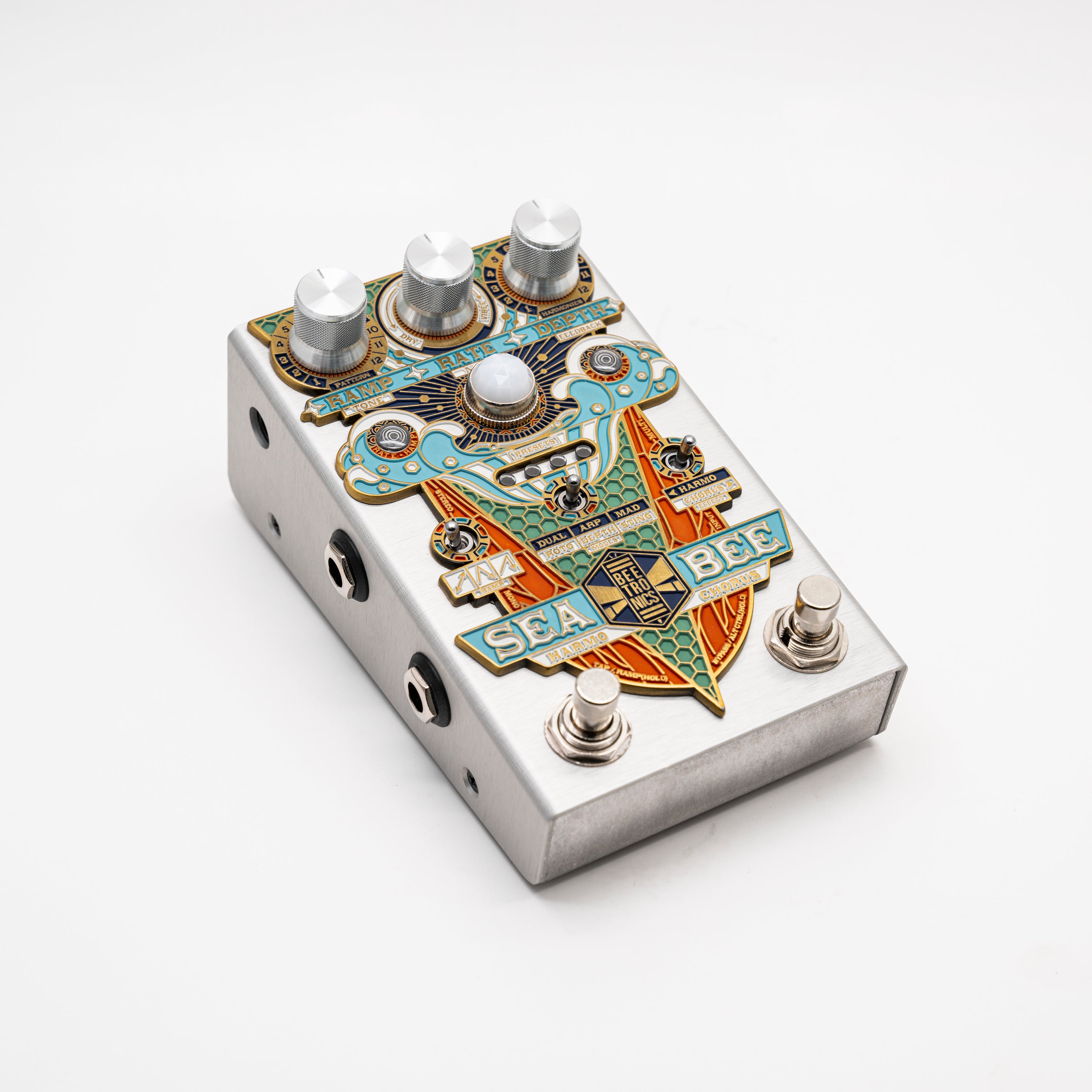
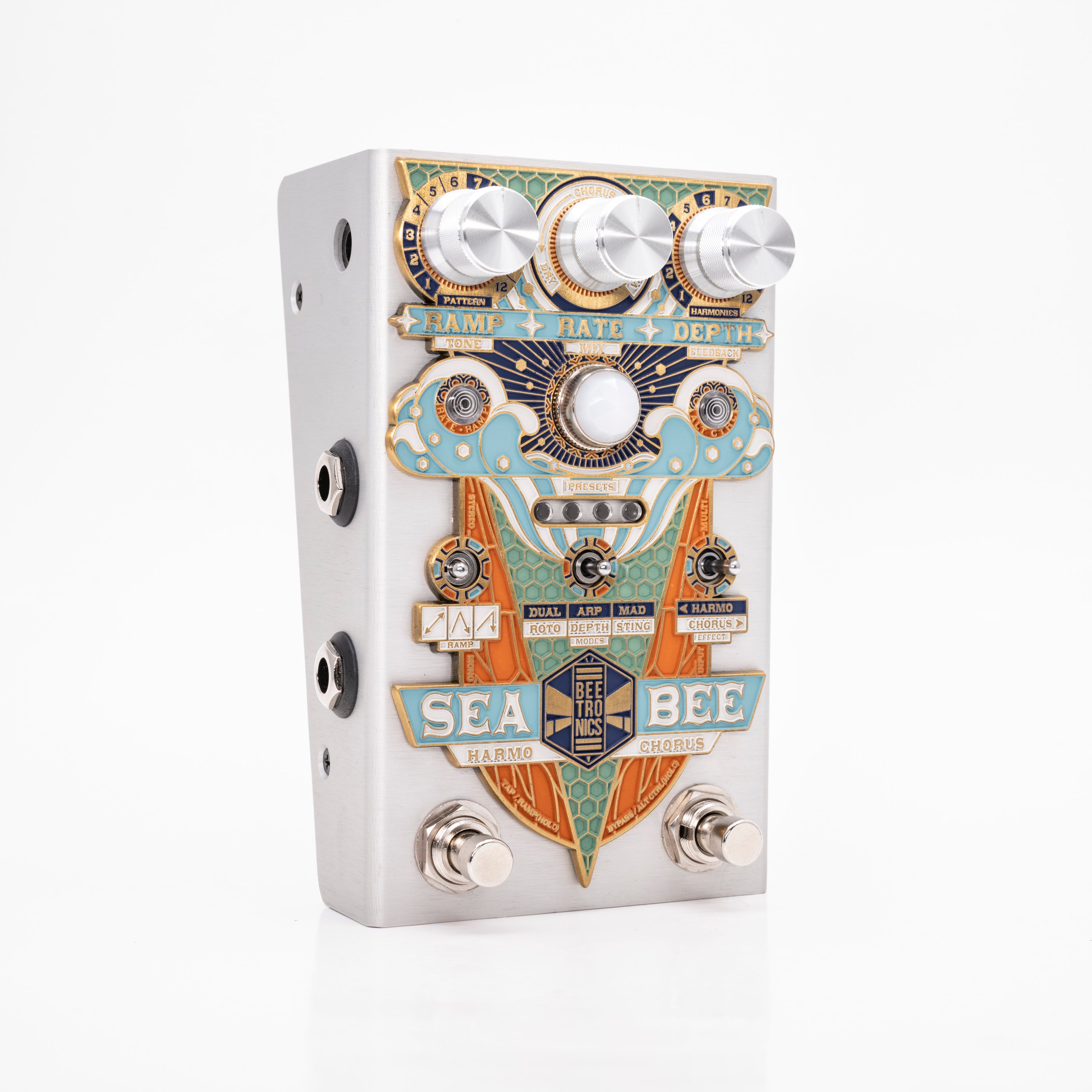
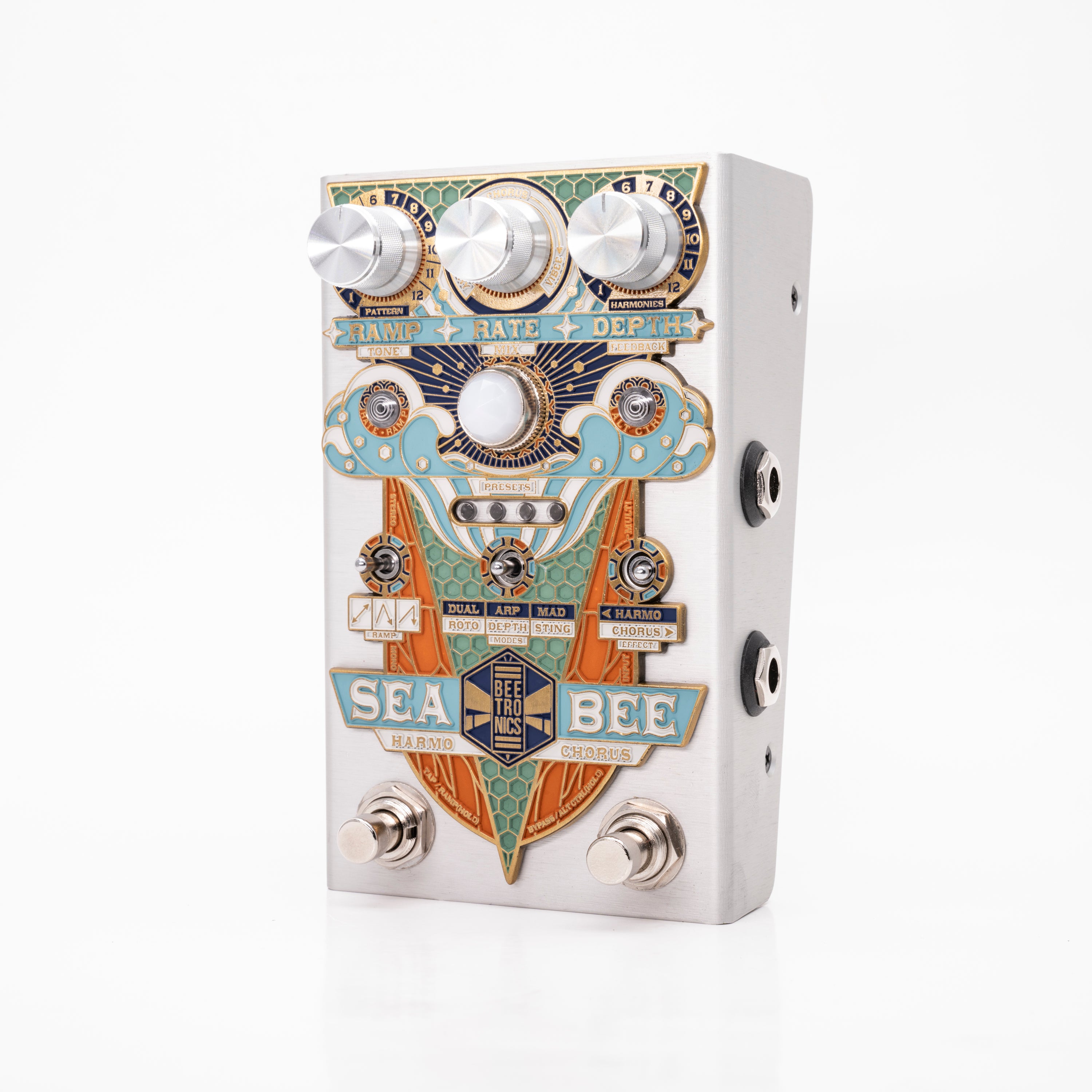

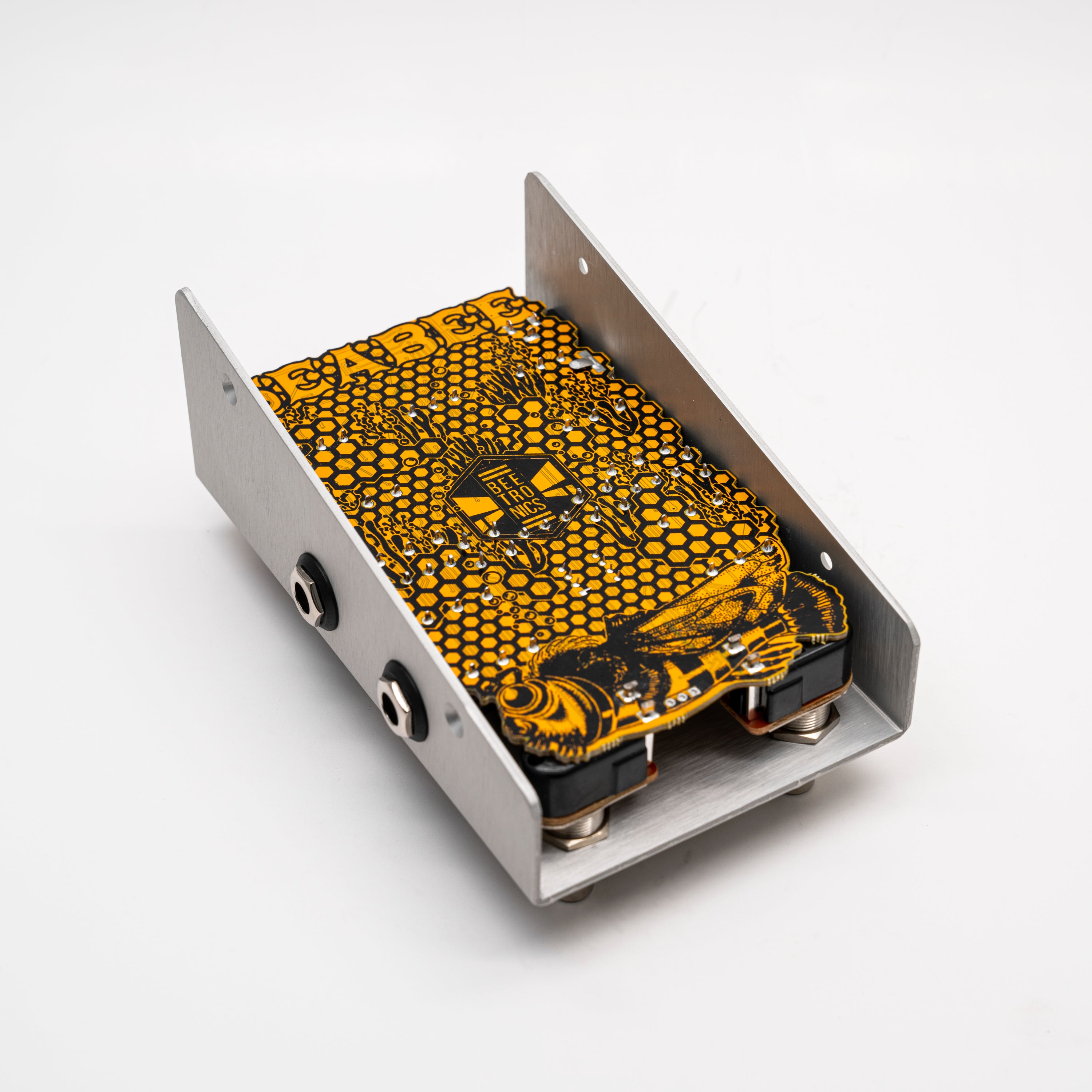
SEABEE – Harmochorus.
The most full-featured chorus pedal on earth — combining analog bucket-brigade warmth with digital precision and pitch-shifting magic.
With three Chorus modes and three Harmochorus modes, the SEABEE delivers everything from lush vintage swirl to arpeggiated, pitch-bending patterns. Choose between dual-speed modulation, chord-based arpeggios, or thousands of randomized sequences — all highly musical and deeply expressive.
Add tap tempo, selectable ramp shapes, 16 onboard presets, stereo outs, MIDI, and full expression control — and you've got a modulation pedal that doesn’t just sit in the mix, it swims in it.
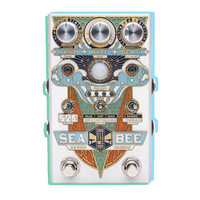
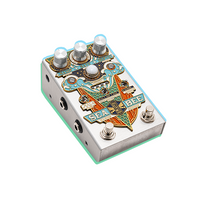
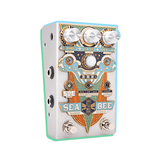

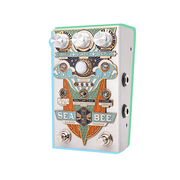
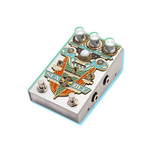
Video
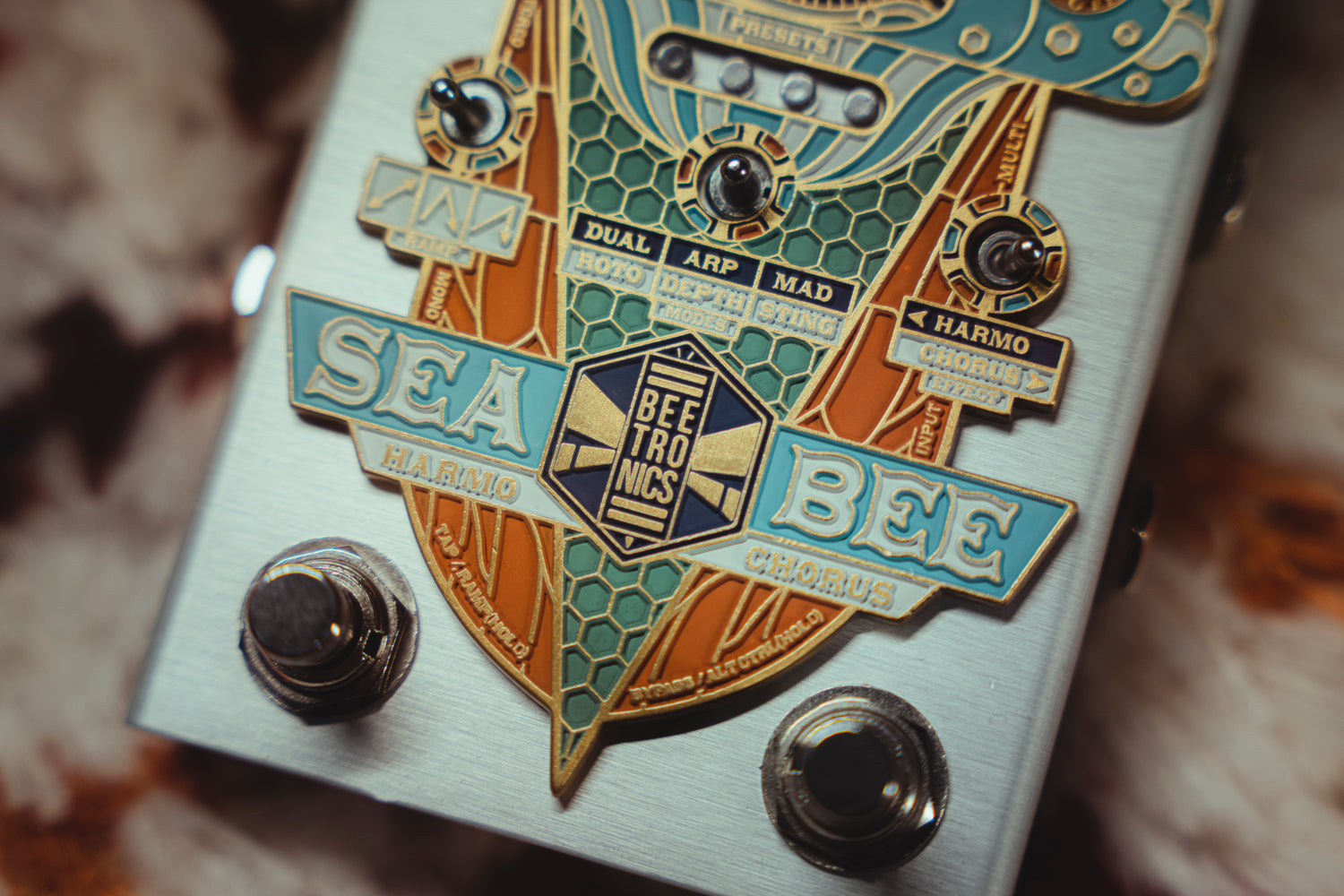
From Classic to Wild
Rich analog chorus tones or pitch-shifting Harmochorus modes — each with unique control options like dual speeds, ramping, and dynamic modulation never beefore possible.
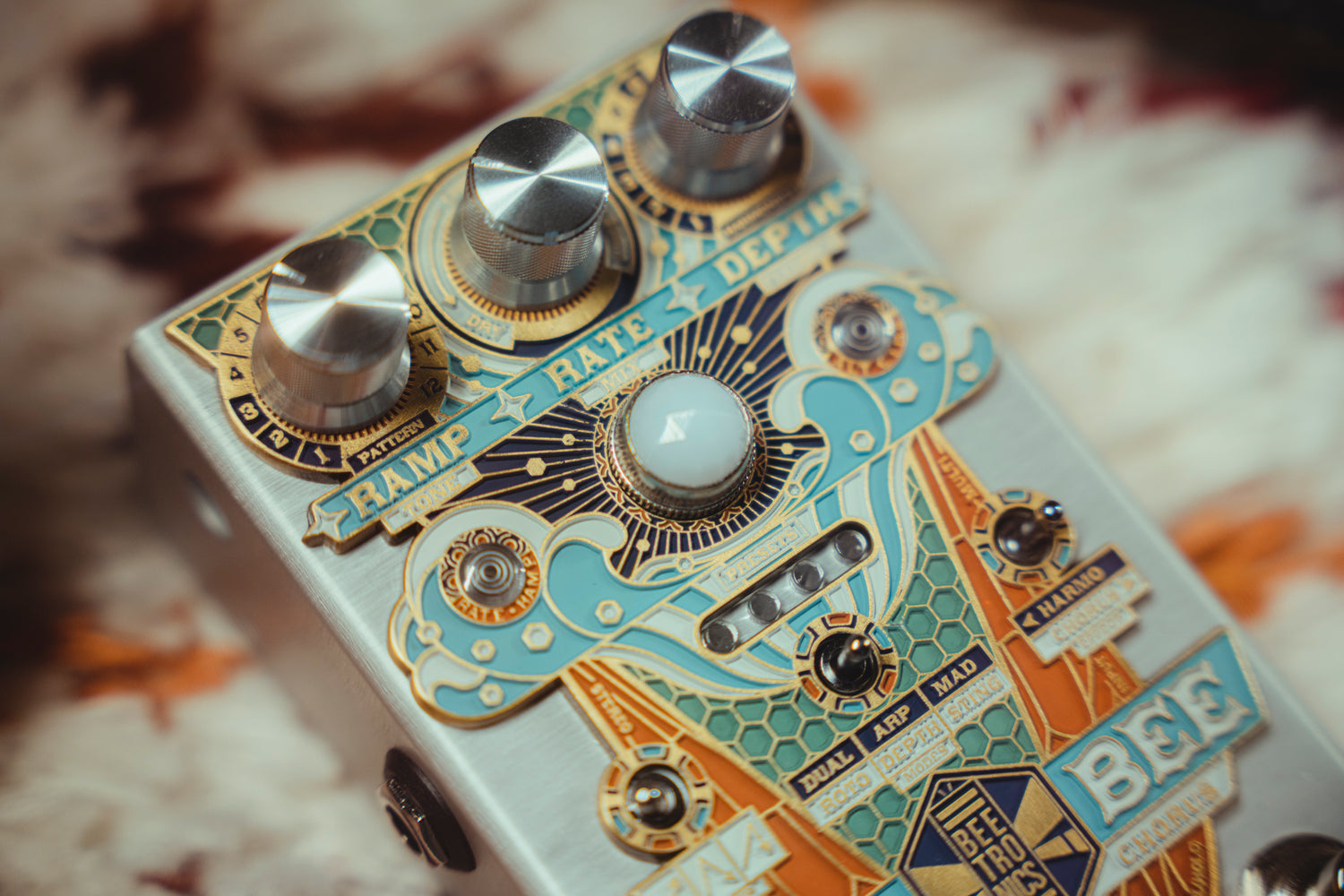
Analog Warmth Meets Digital Precision
Built around a genuine bucket-brigade (BBD) chip with digitally controlled delay time, the SEABEE merges vintage texture with modern movement.
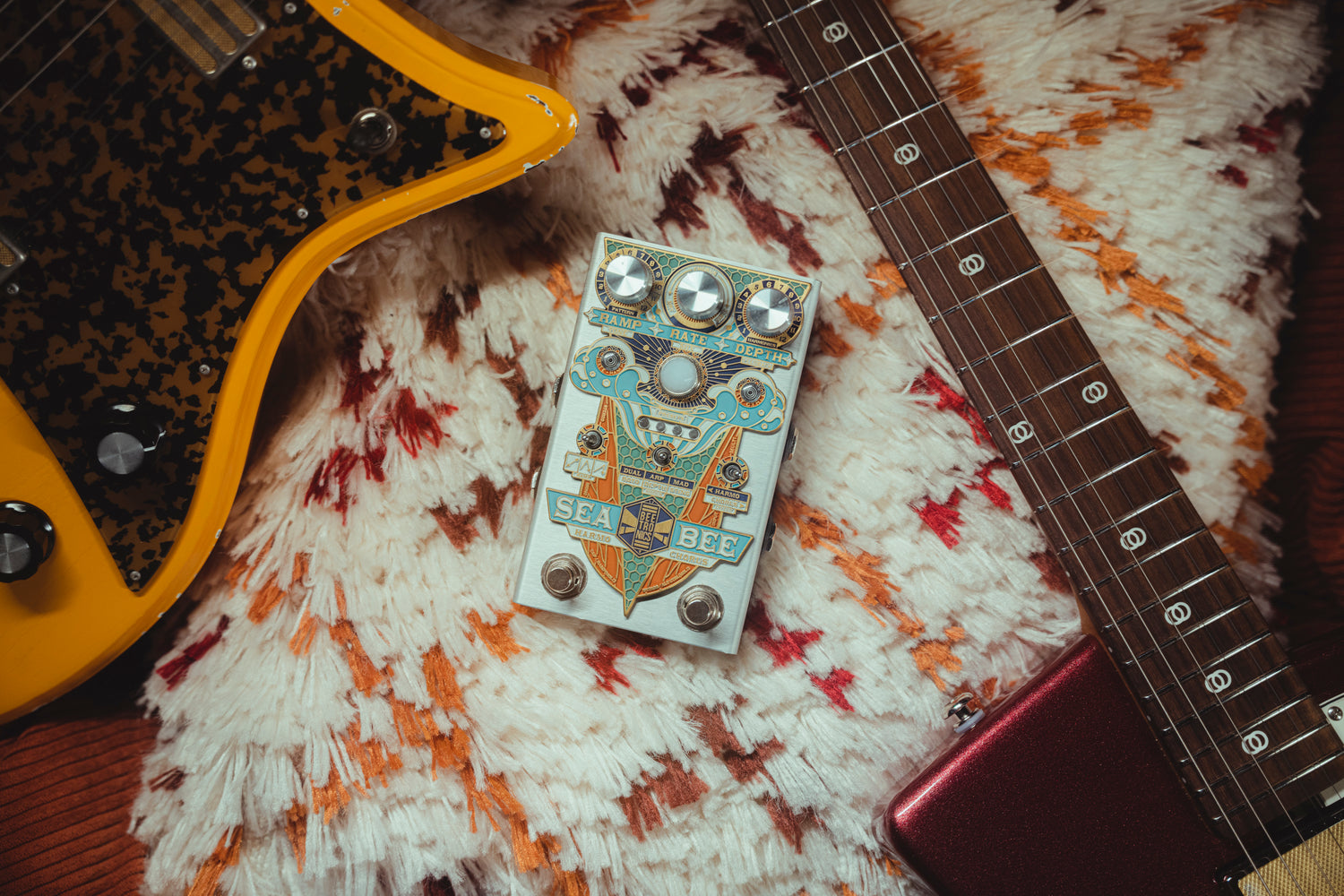
Preset-Ready and Stage-Ready
With 16 onboard presets, stereo I/O, MIDI, tap tempo, and expression support, it’s built for creative workflow and live flexibility.
COMMON QUESTIONS
What makes the SEABEE different from other chorus pedals?
It combines a true analog BBD signal path with digital control over delay time, enabling pitch-shifting Harmochorus effects far beyond what traditional chorus pedals can do.
What are the six modulation modes?
Three Chorus modes (Roto, Depth, Sting) deliver analog modulation with ramping and dual-speed options. Three Harmochorus modes (Dual, Arp, Mad) introduce pitch movement, arpeggios, and thousands of randomized harmonic patterns.
Can I save presets?
Yes, the SEABEE features 16 onboard presets, divided across four color-coded banks. You can also set a favorite preset to load automatically on startup.
Is it true bypass?
Yezzzzz!
Is there any hidden controls?
Well... yes! For my pedal nerds and deep-diving maniacs, we added a couple of fun extras. You don’t need to use these or even know about them to get great tones from the Larva, but they’re cool little touches we included.
To access them, just hold the bypass footswitch (you’ll notice the ramp LEDs change to white while holding, indicating you’re in the alternate control mode).
- Ramp Speed Offset: While holding the bypass, adjusting the ramp speed will change the center point of the LFO. It’s interactive with the depth control, so experiment and find where you like it.
- Rate 2 Subdivision: While holding the bypass, Rate 2 becomes a subdivision of Rate 1 instead of a linear control. All the way down, it matches Rate 1, and as you turn it up, it starts subdividing. This is great to sync phaser one and two and play with the ramp in sync or you can think of it as tap divisions. There are 12 subdivision. If you adjust Rate 2 without holding the bypass, it returns to its regular linear function.
Both of these settings are saved when you turn the pedal off, so they’ll come back the same way when you power it on again. The pedal also remembers its last state, so if it’s in bypass or not, it will power on the same way you left it.

